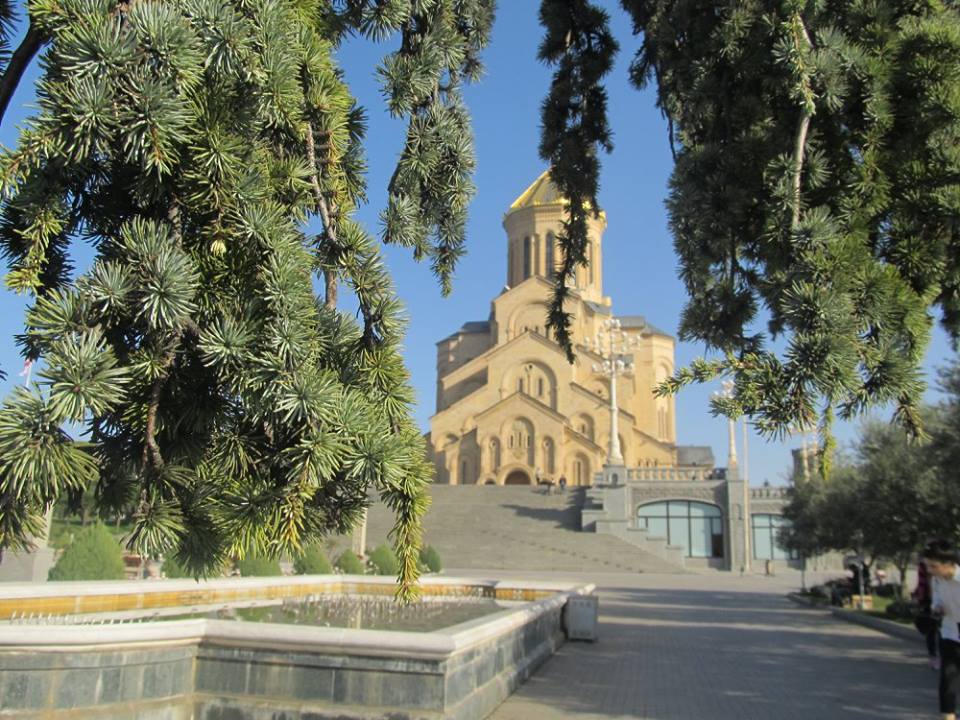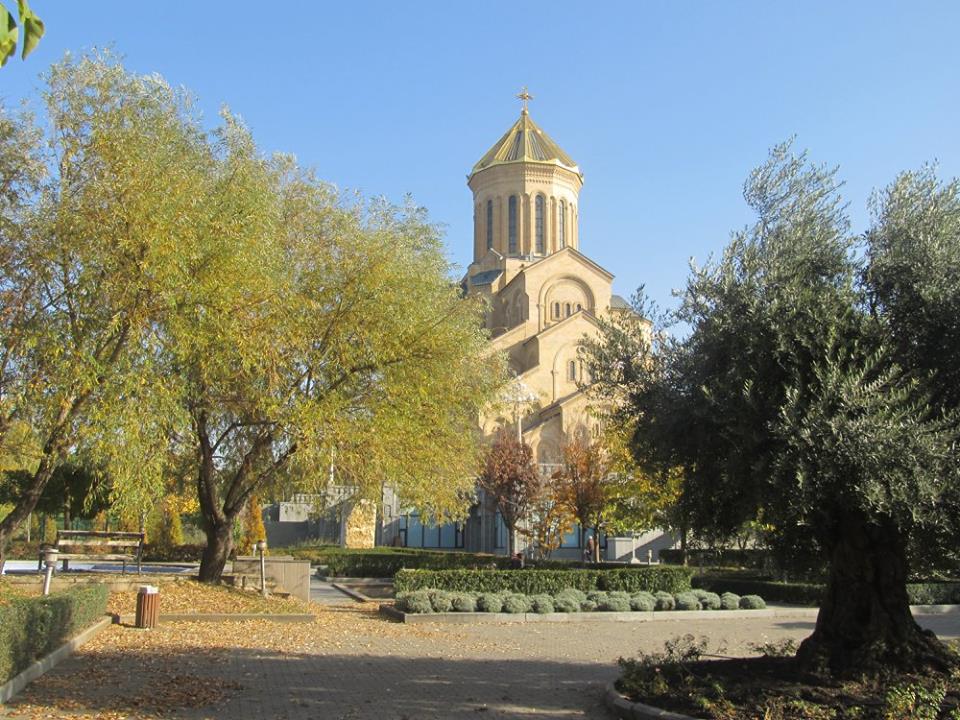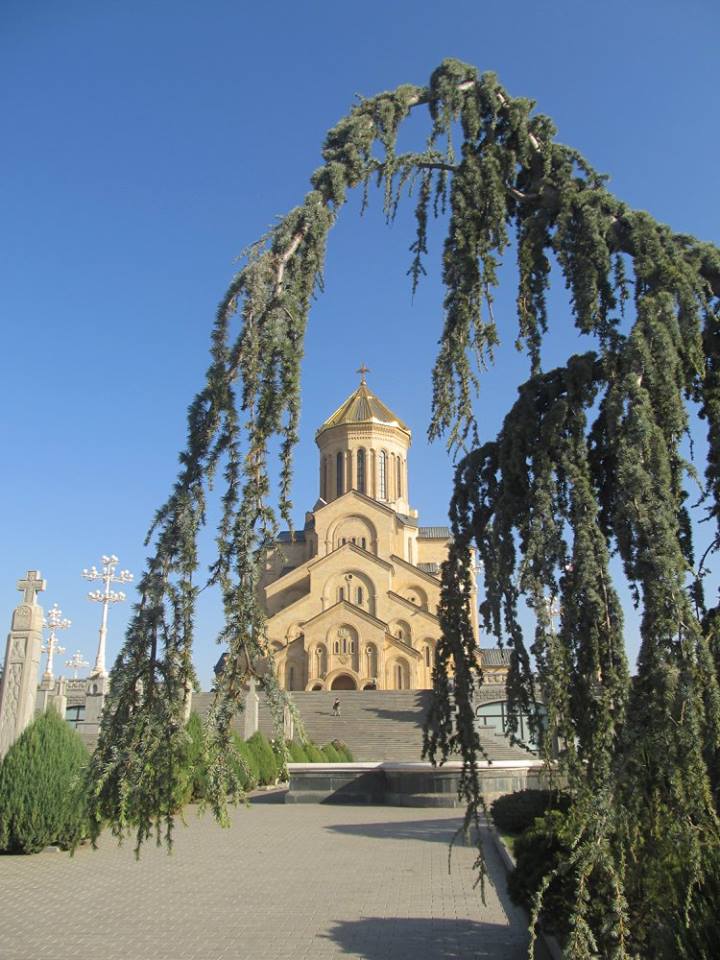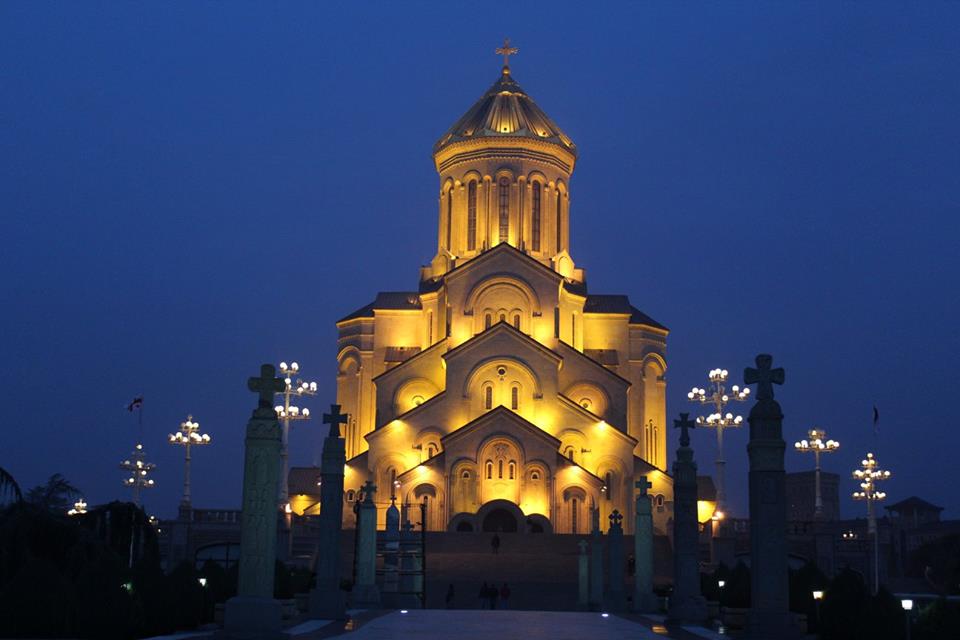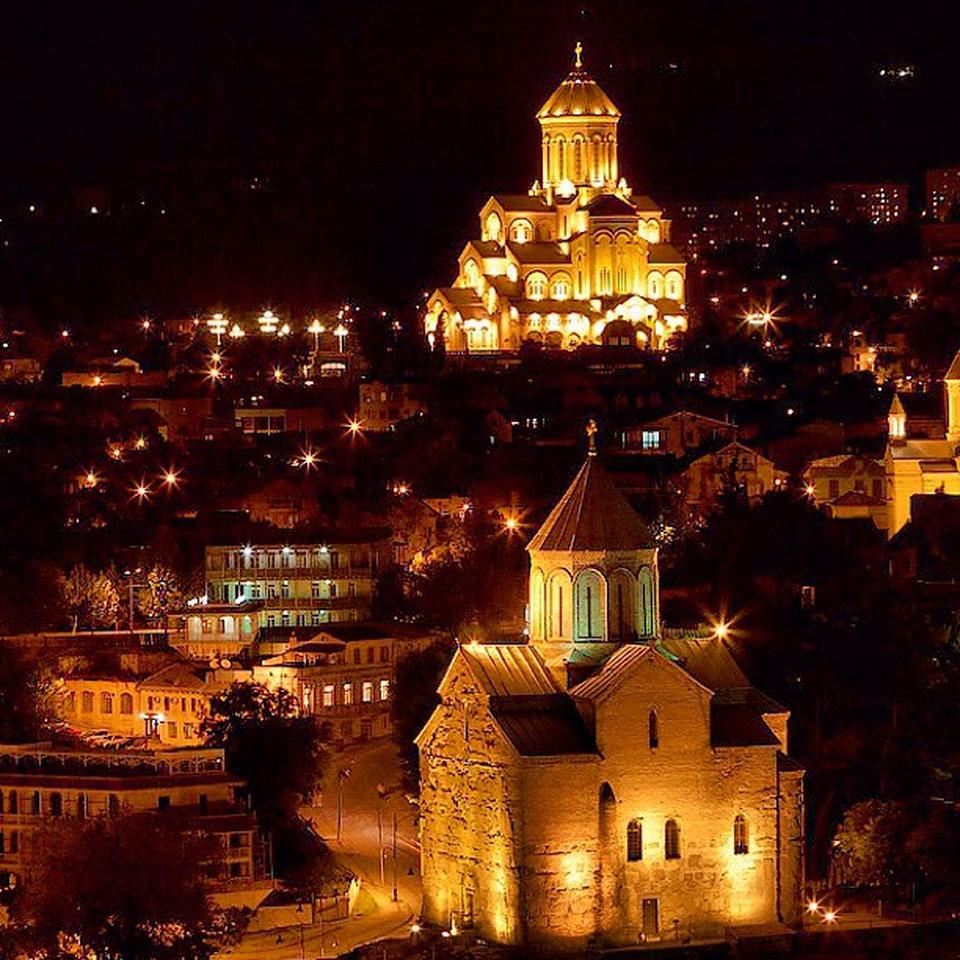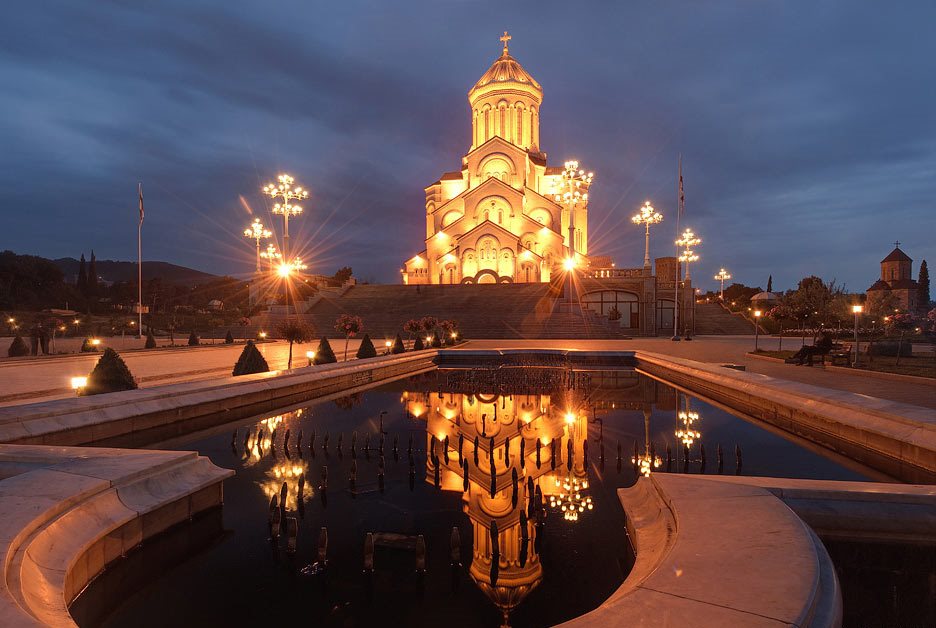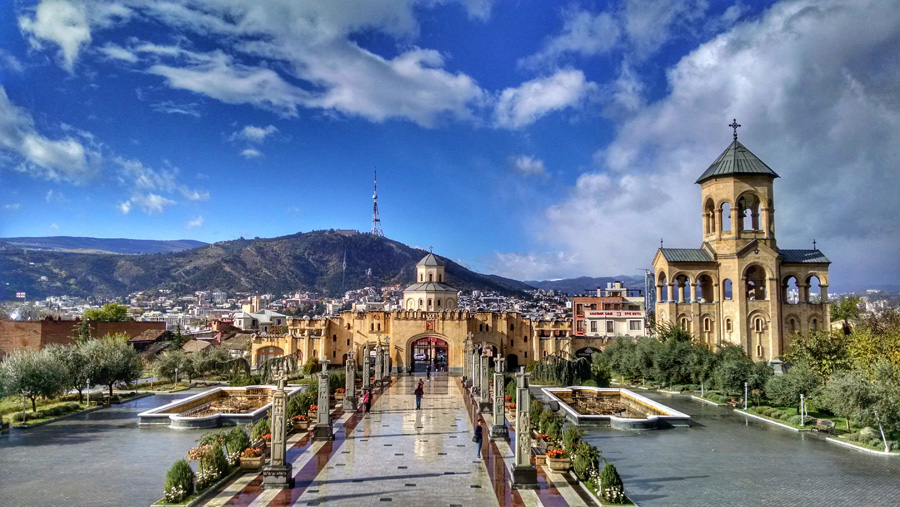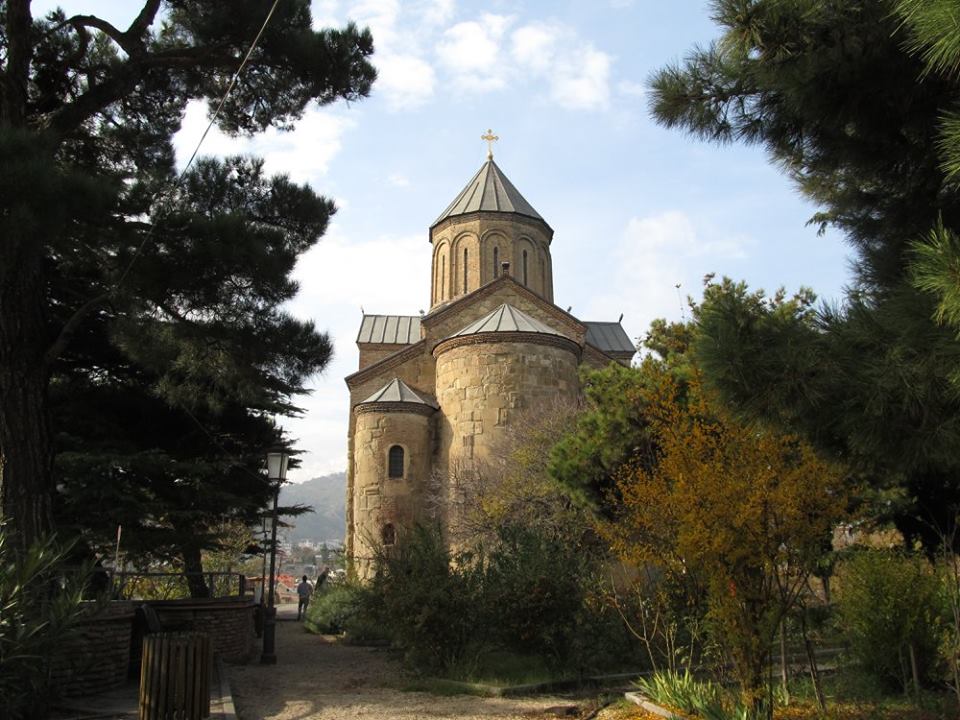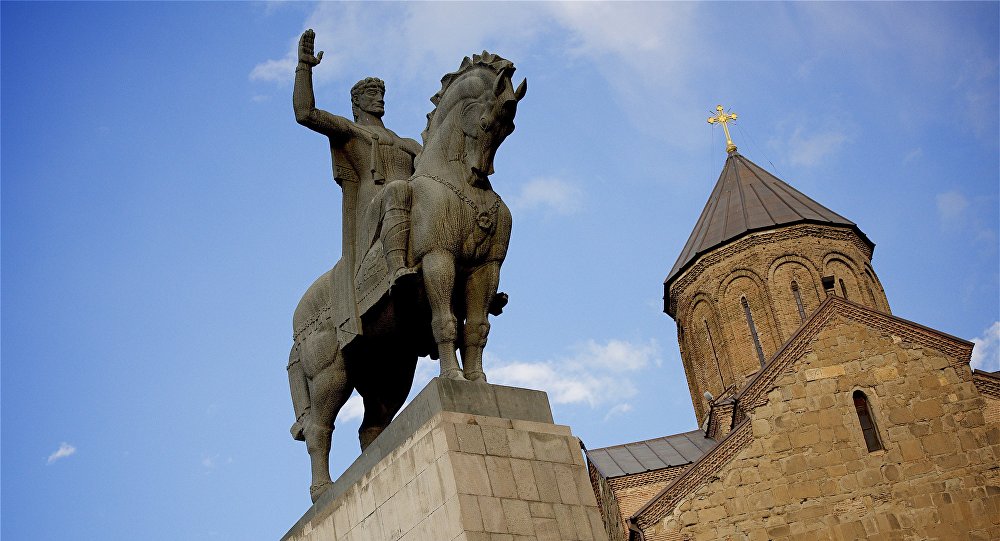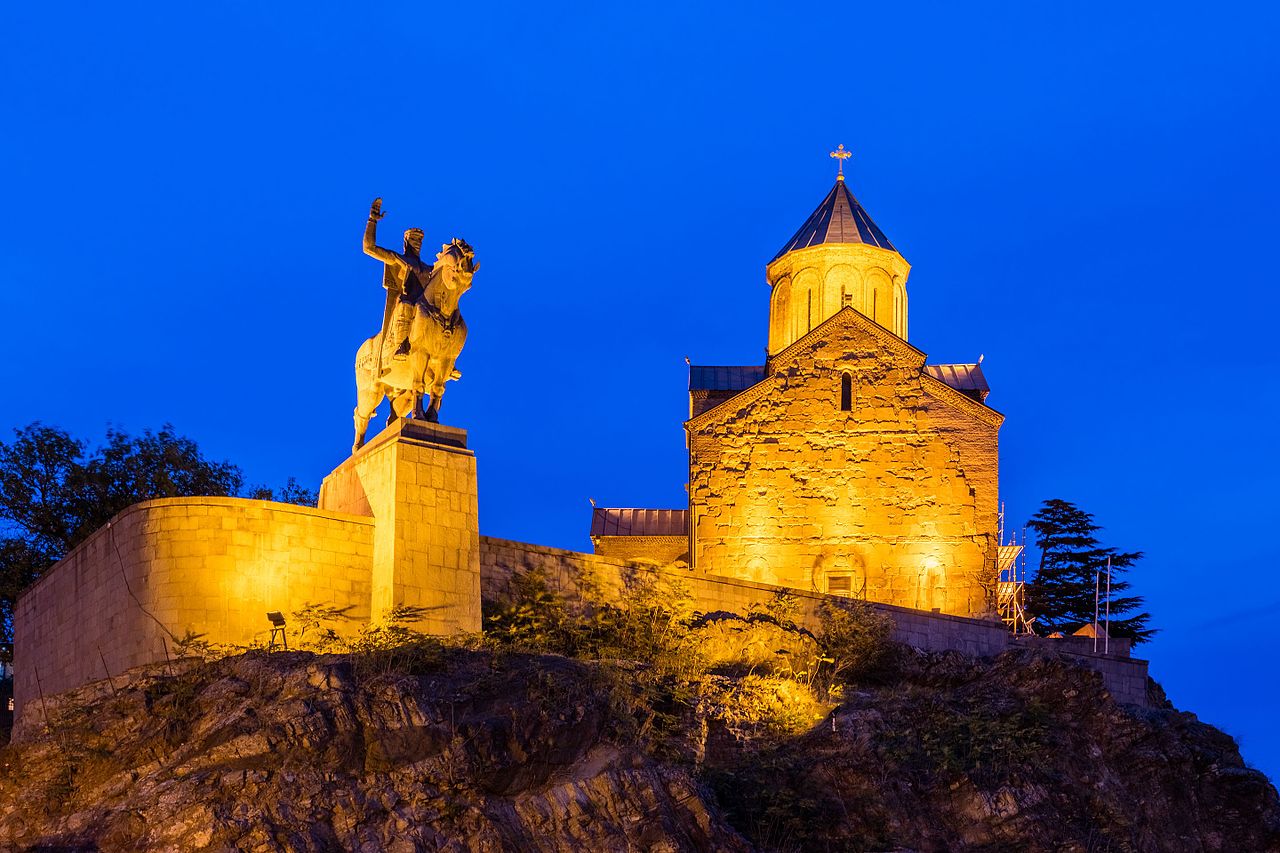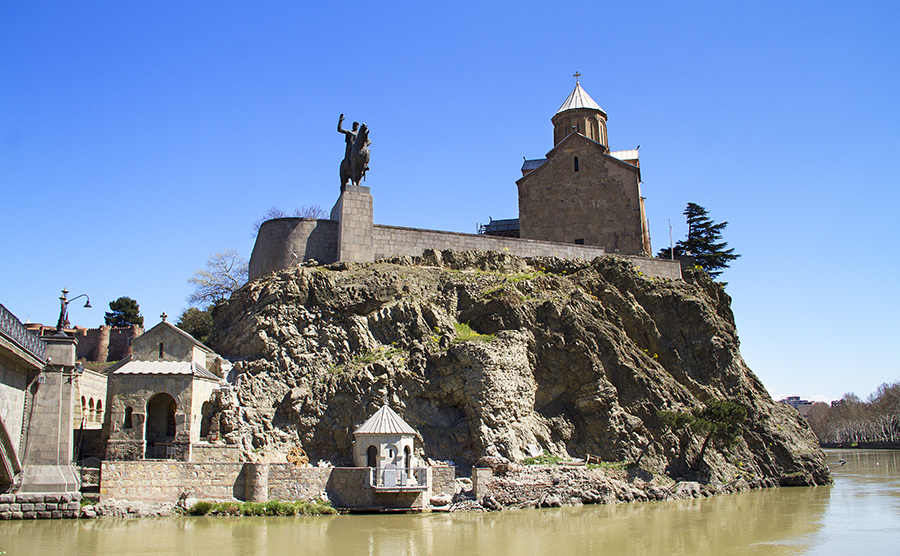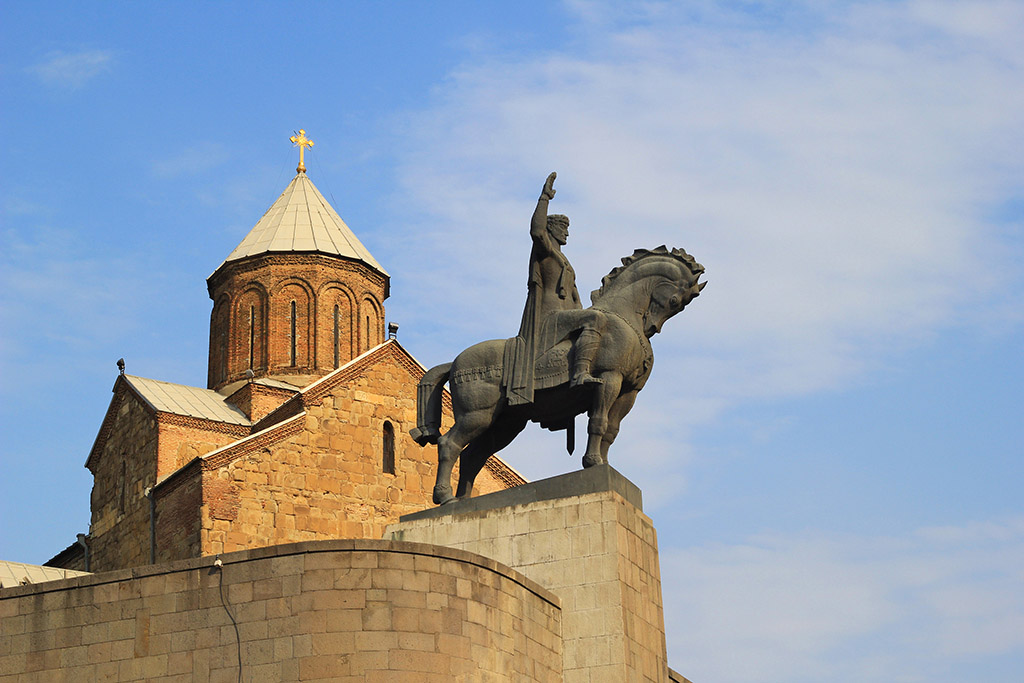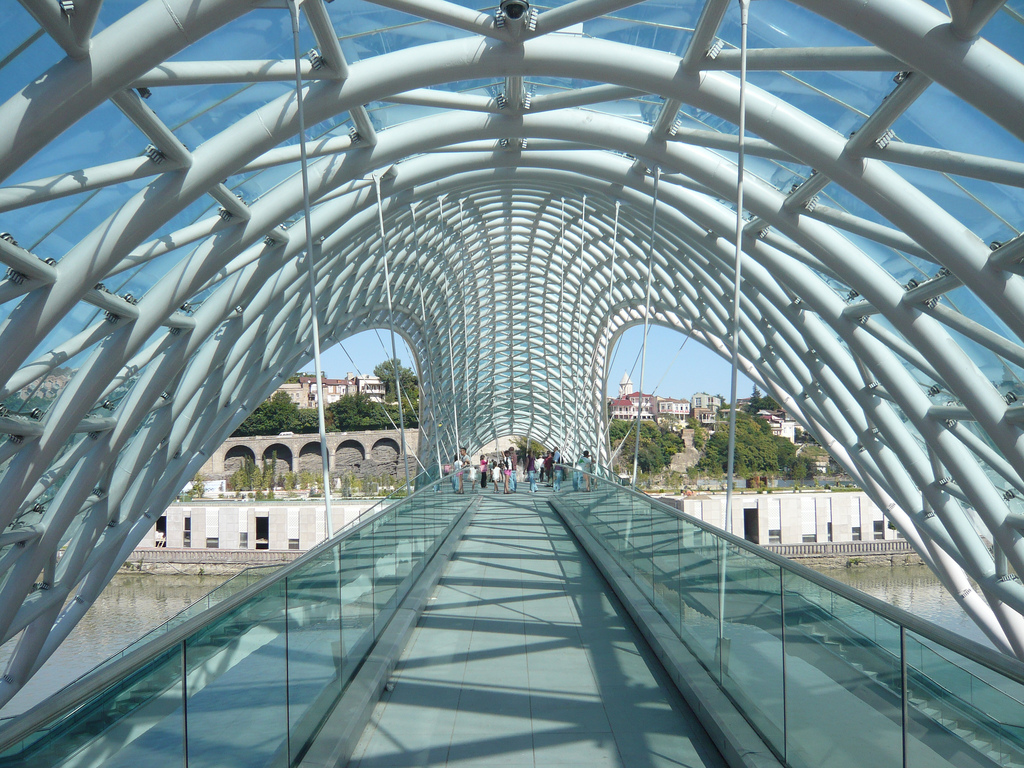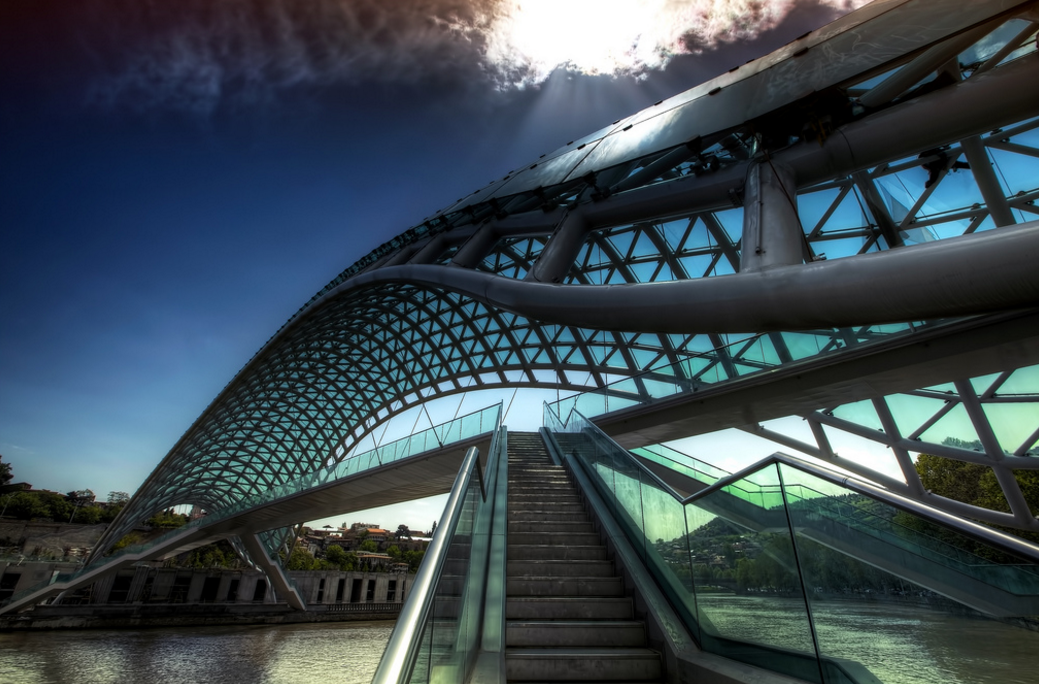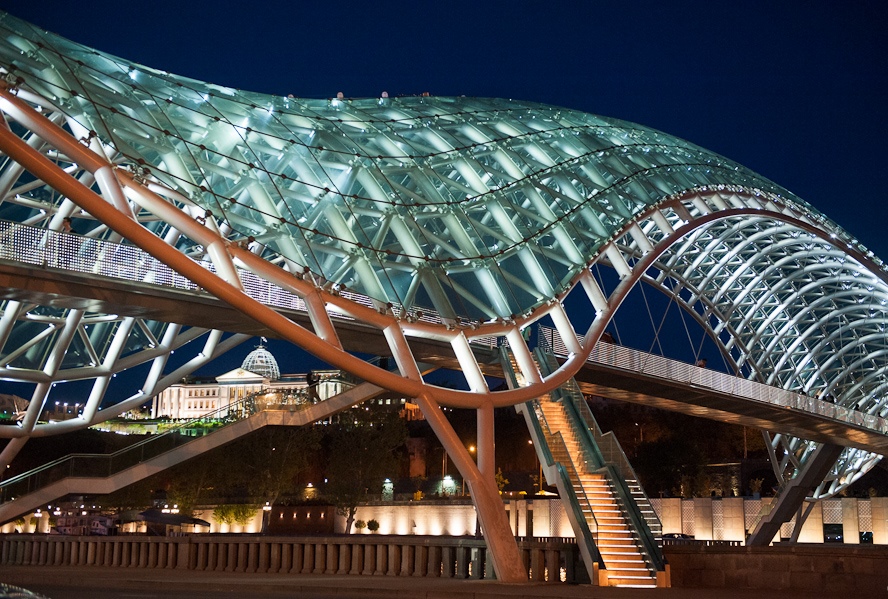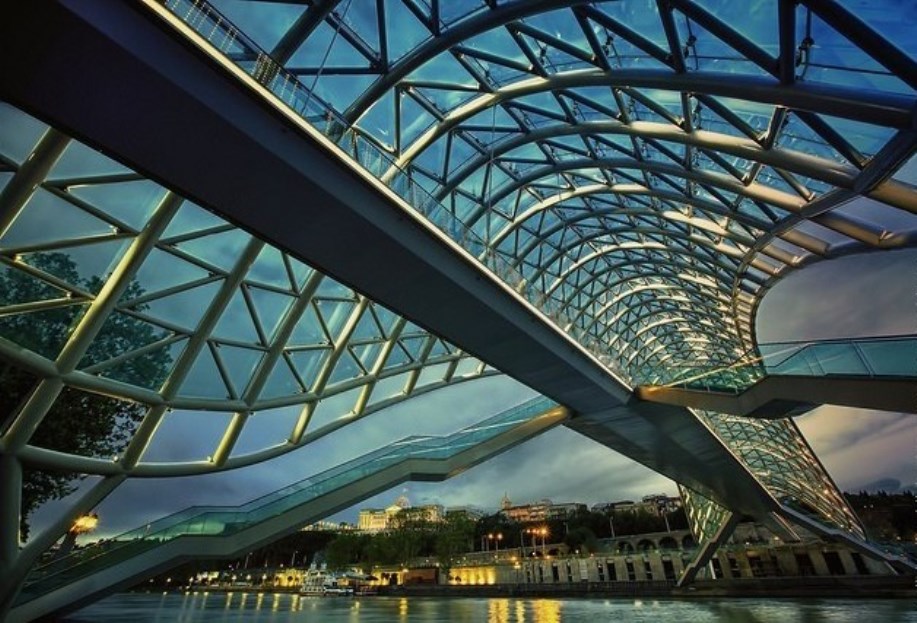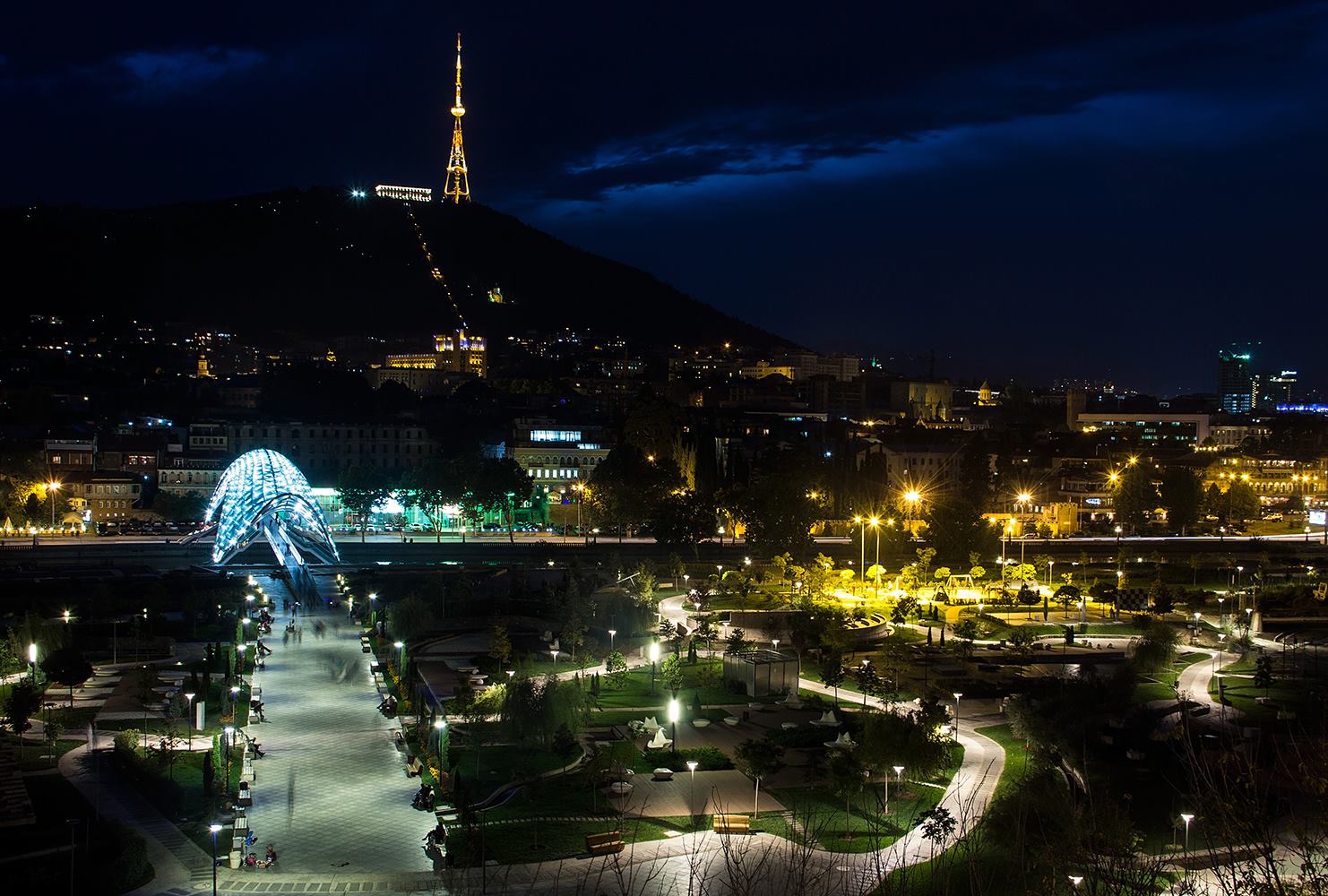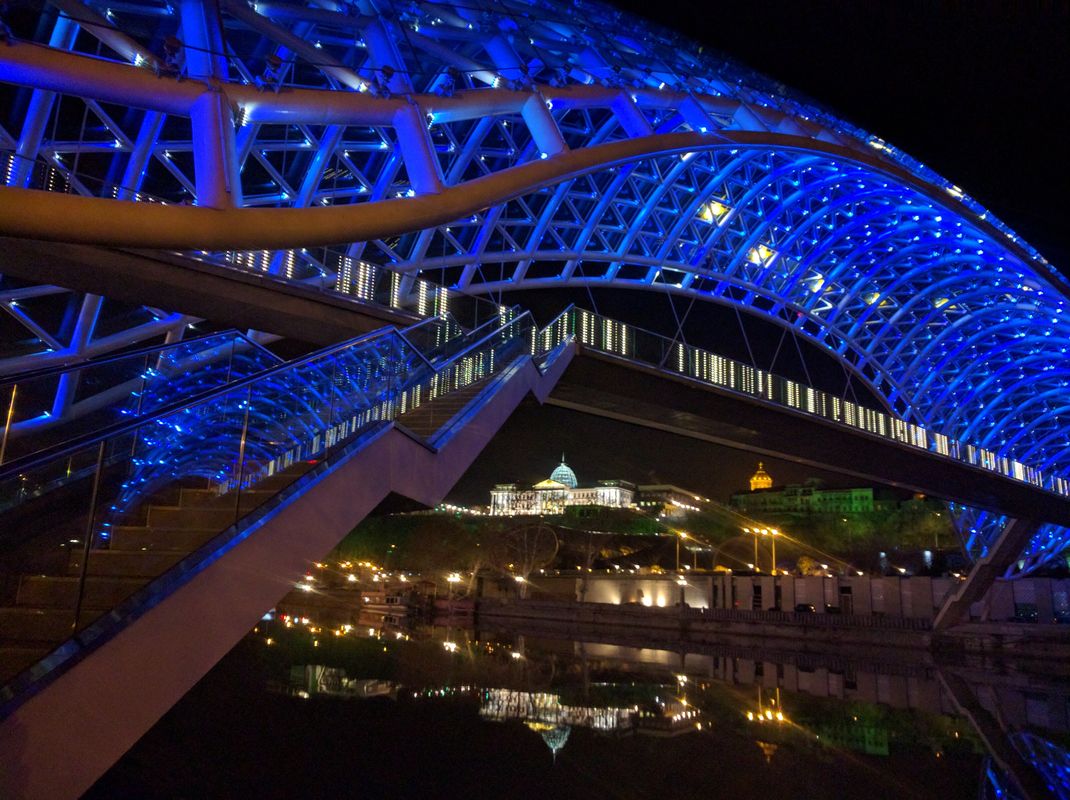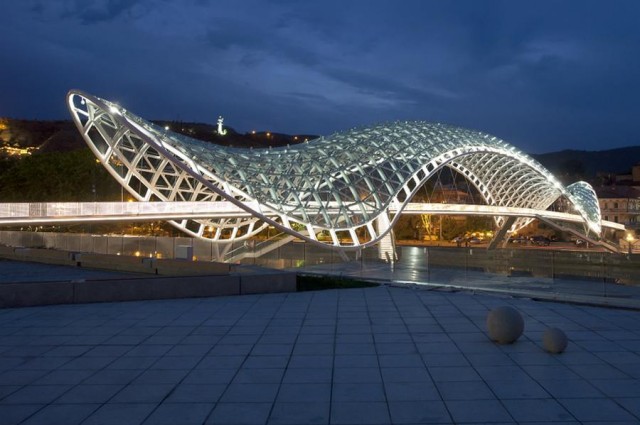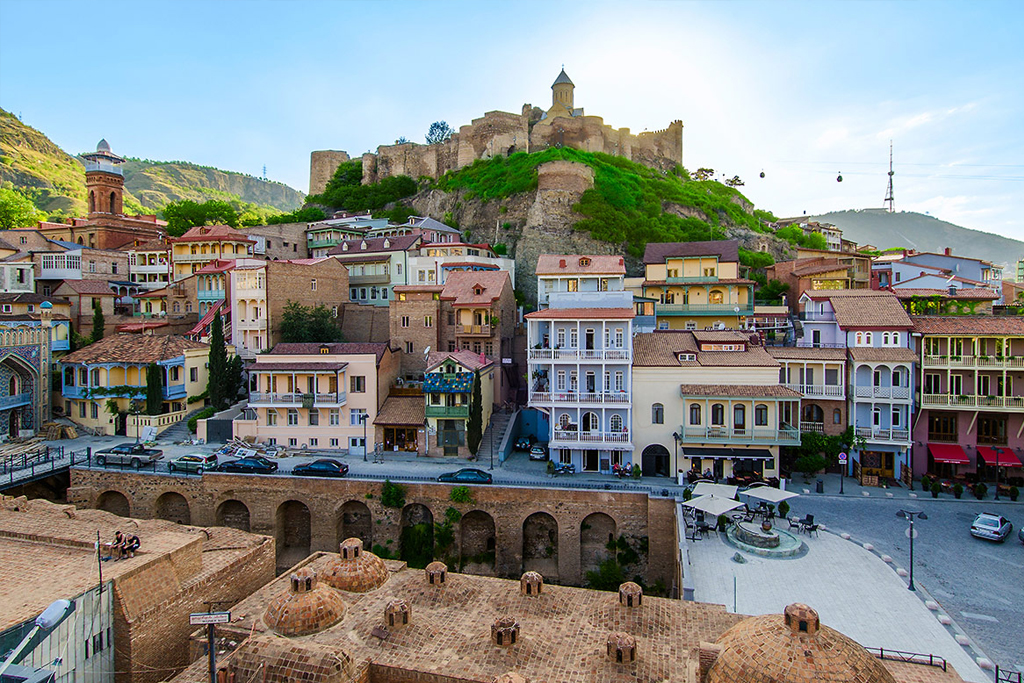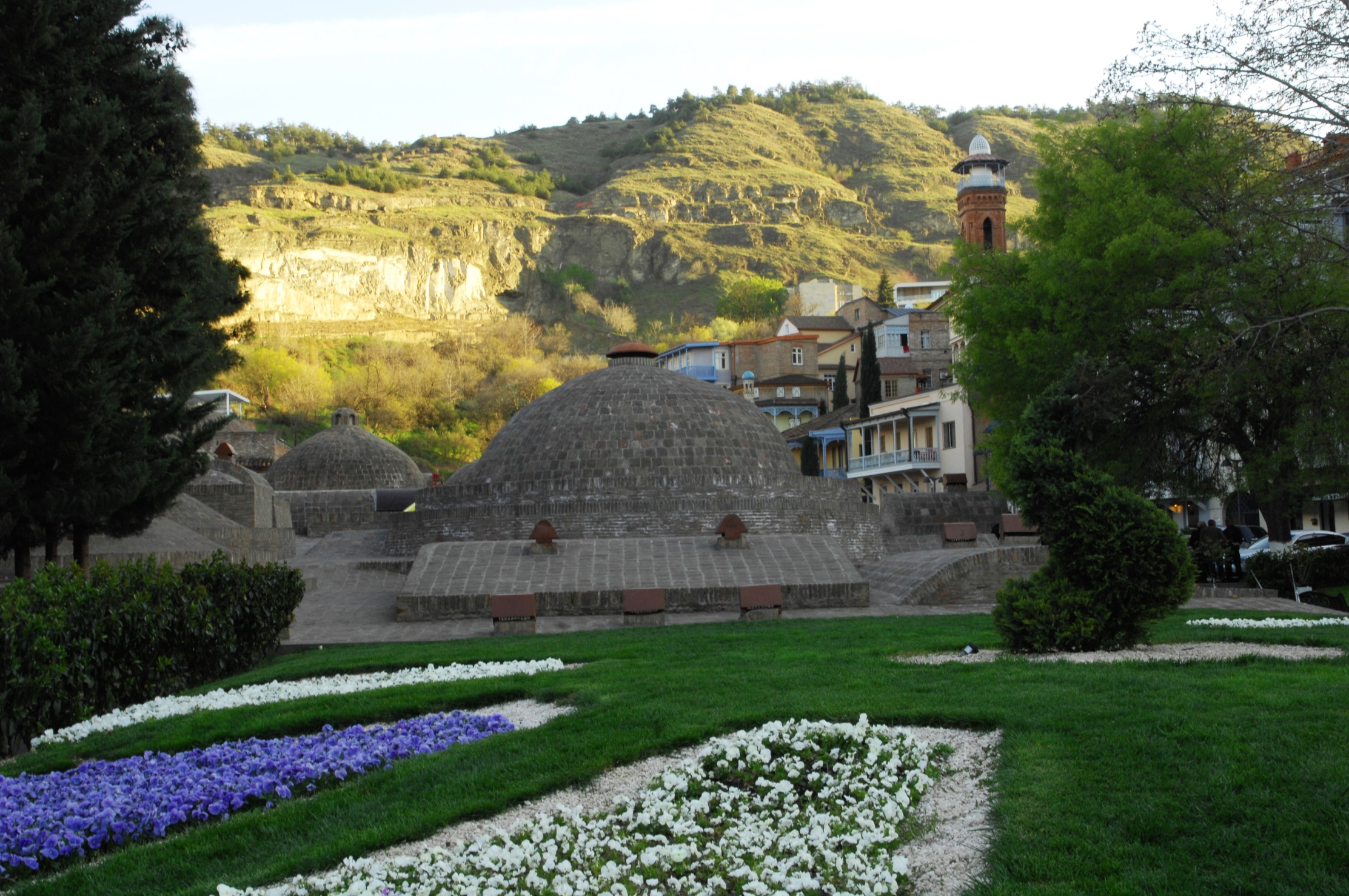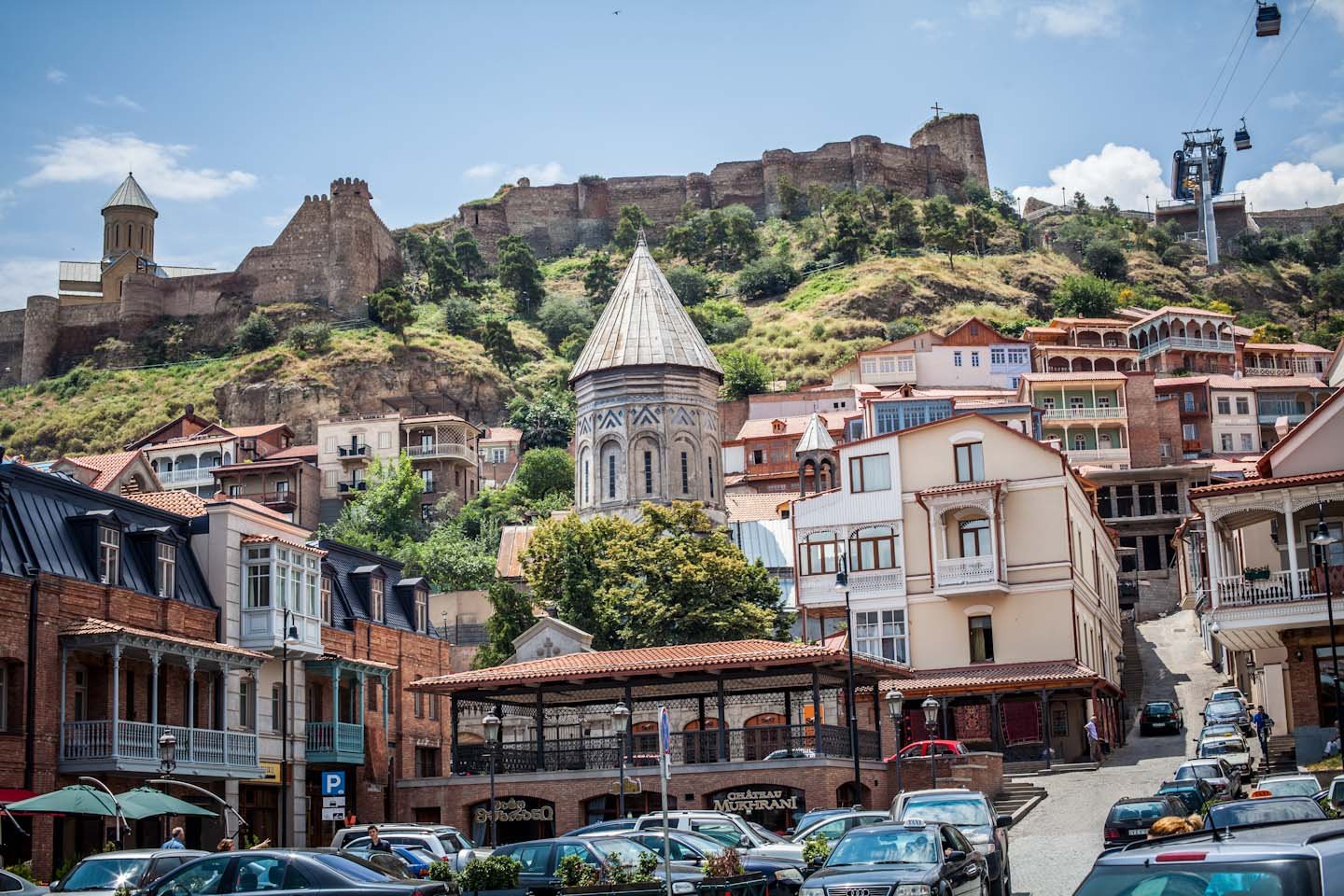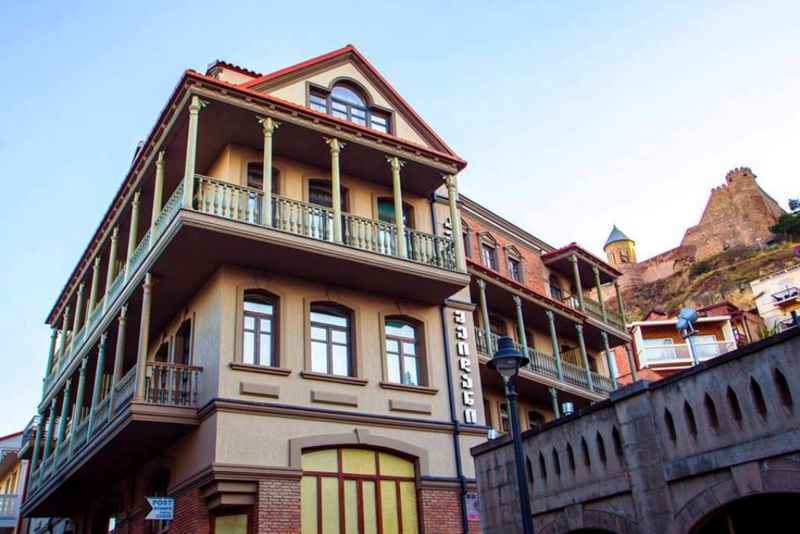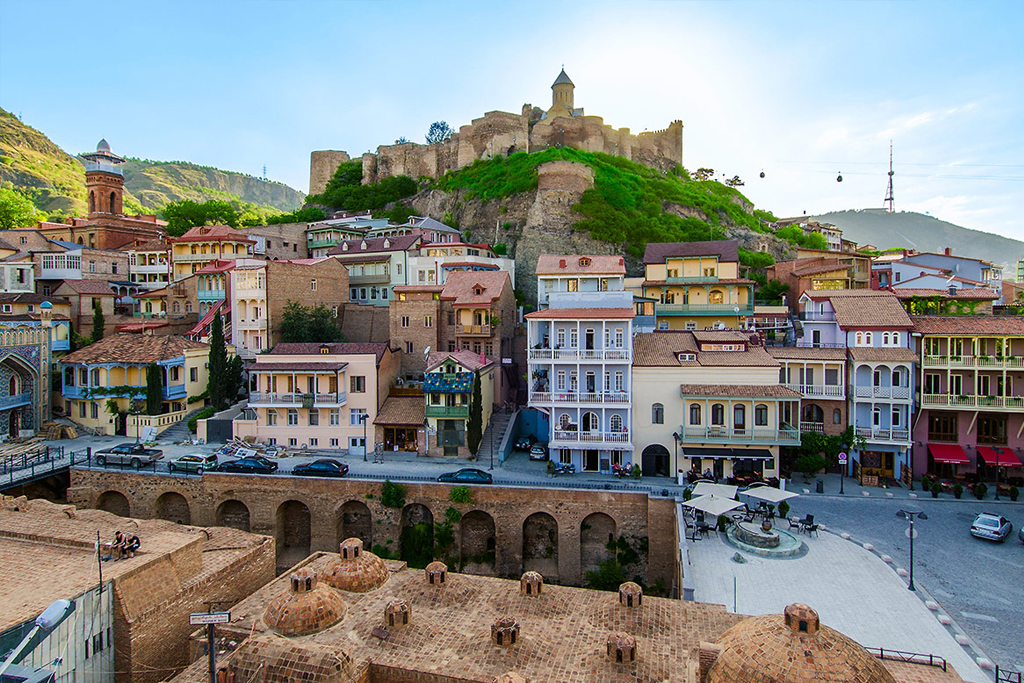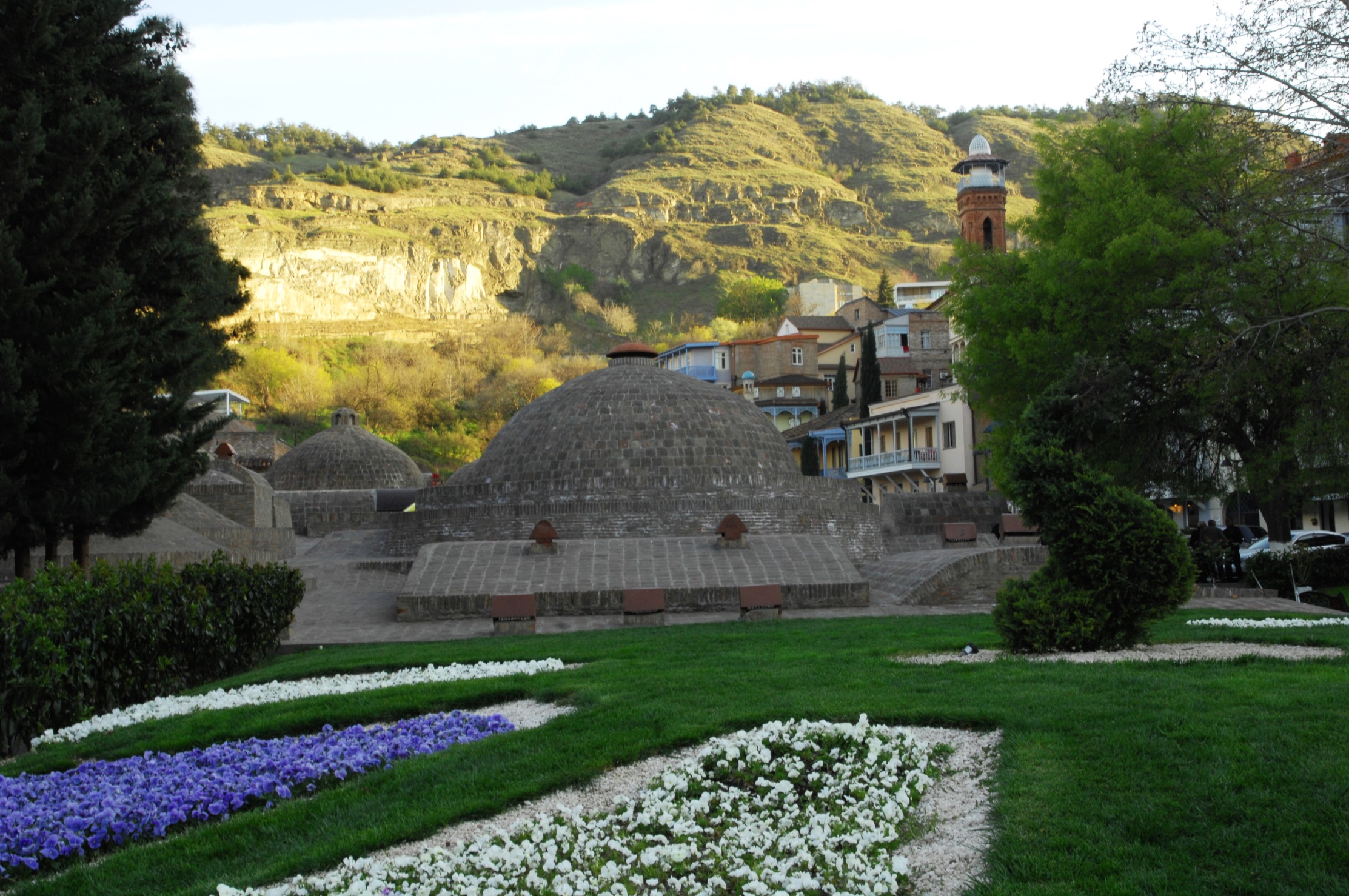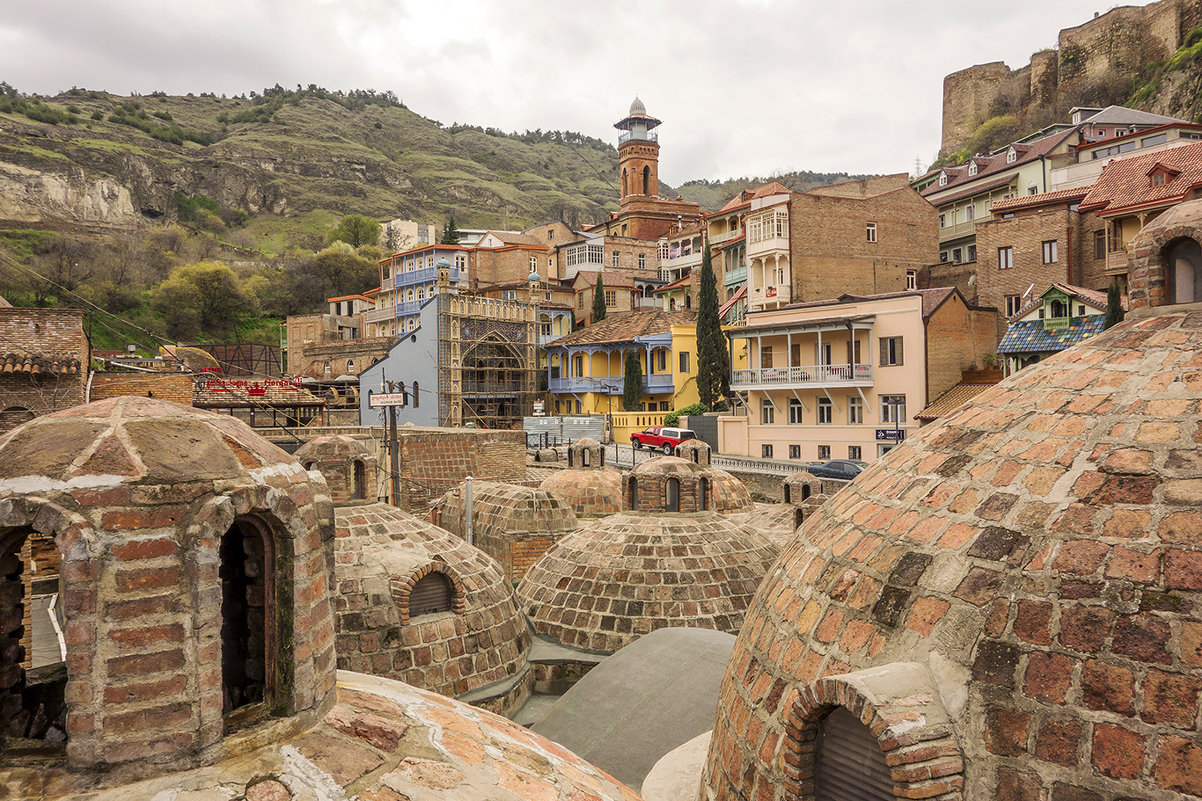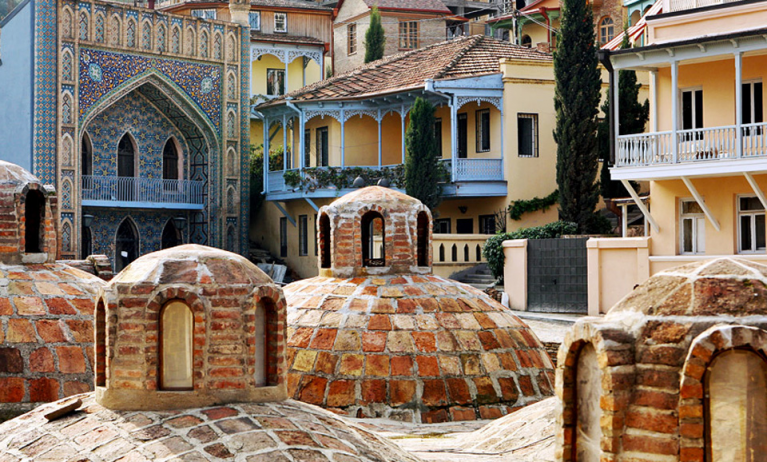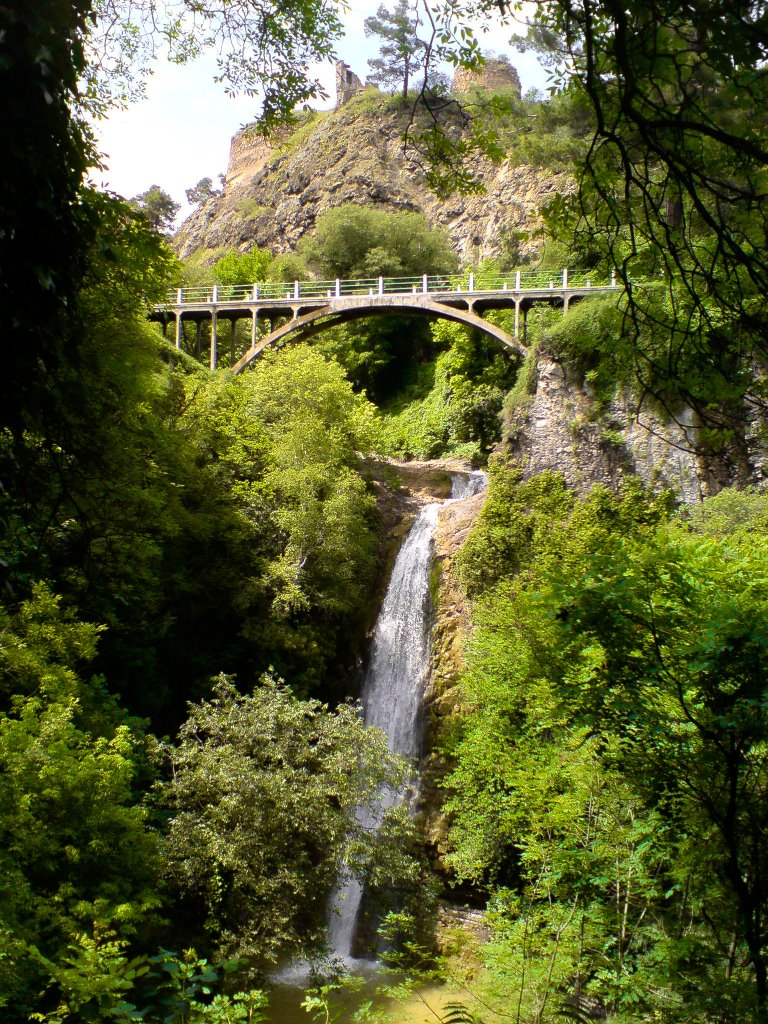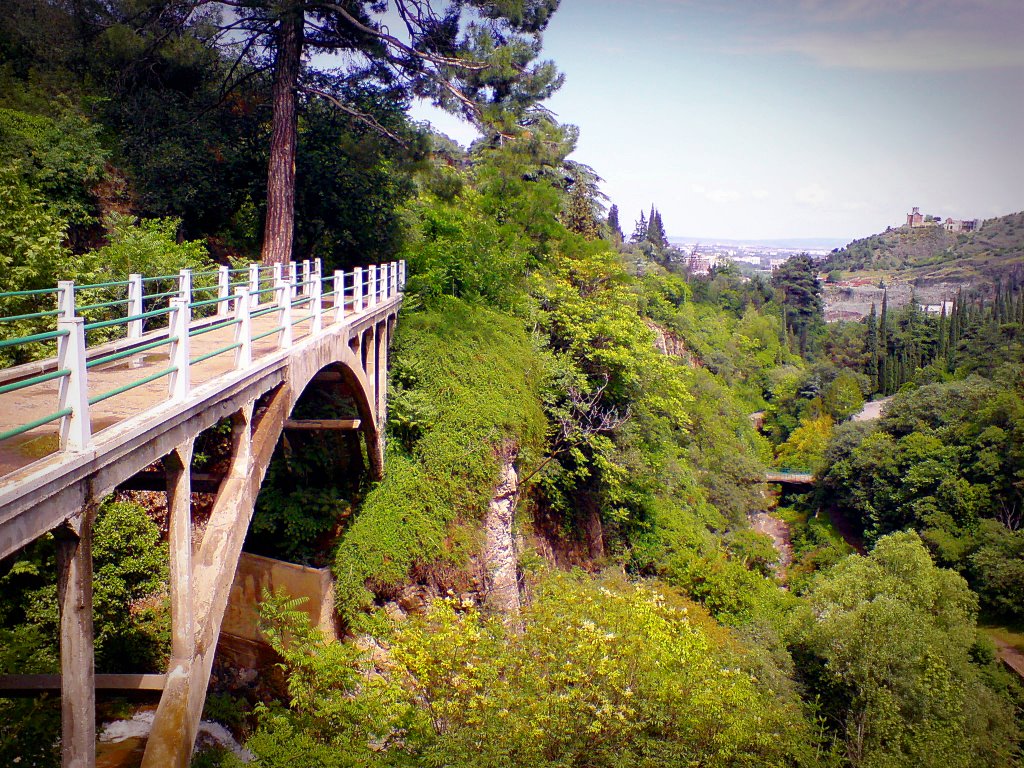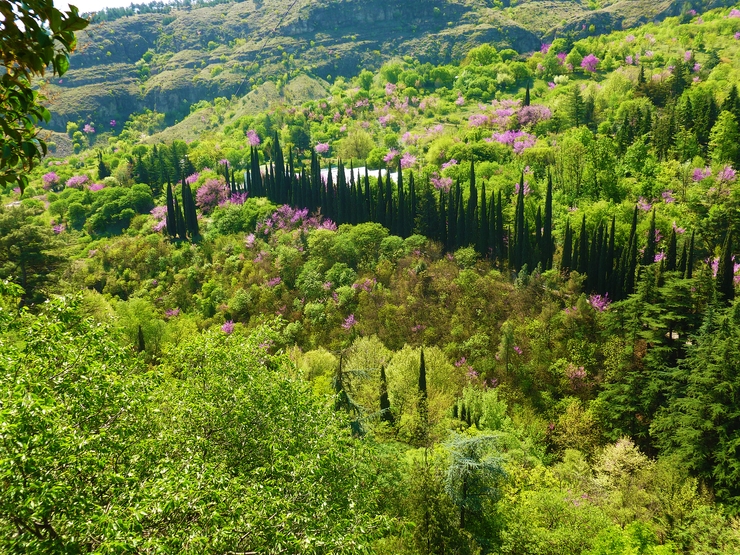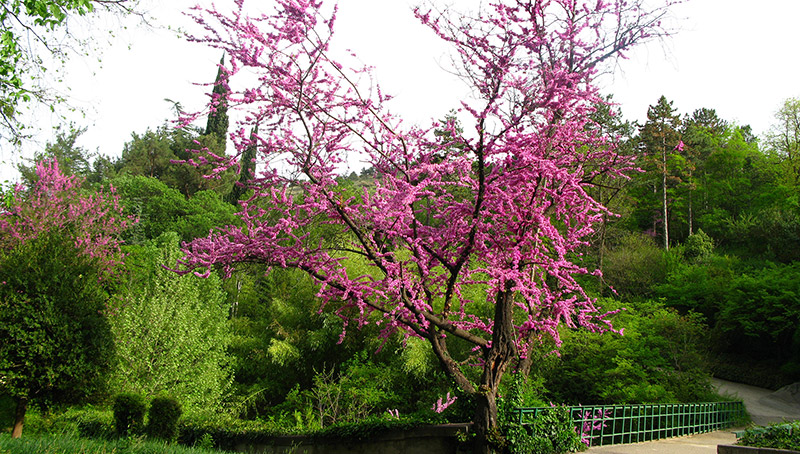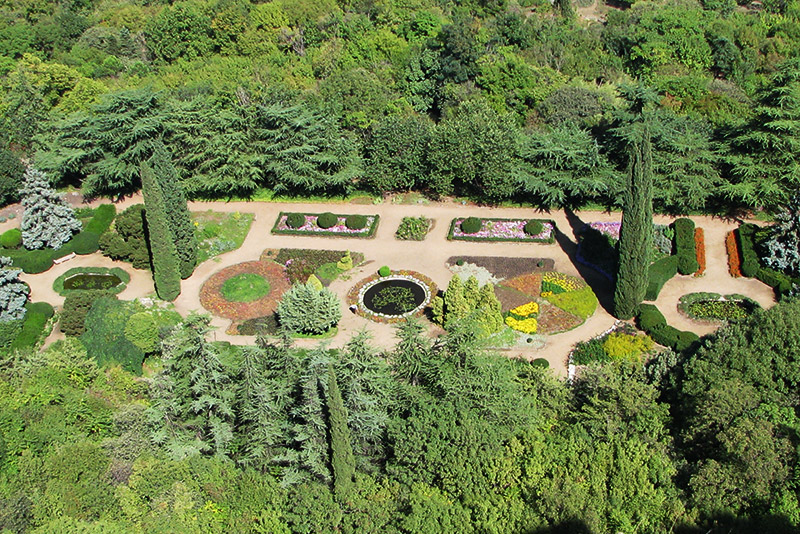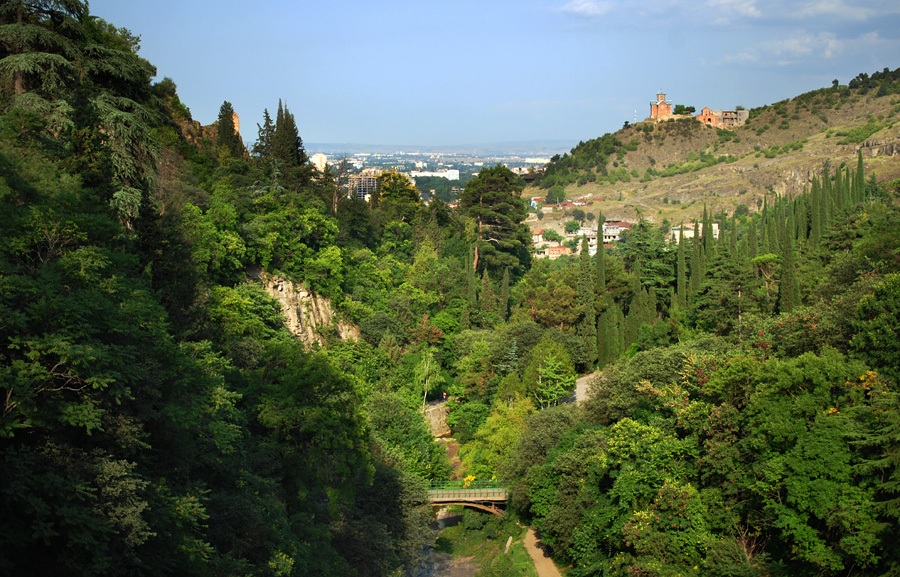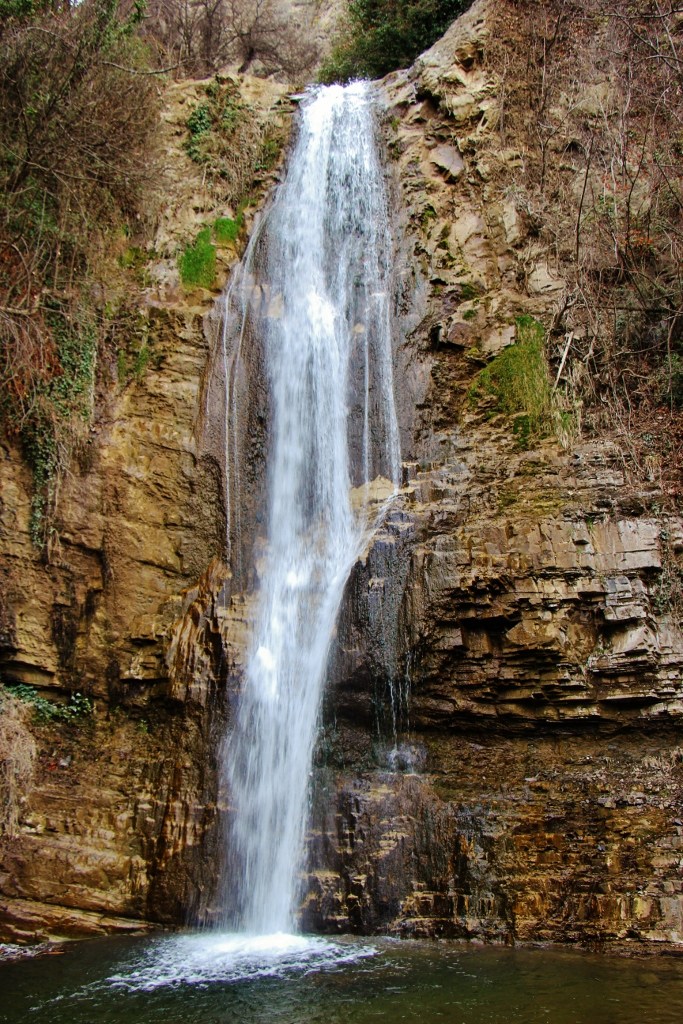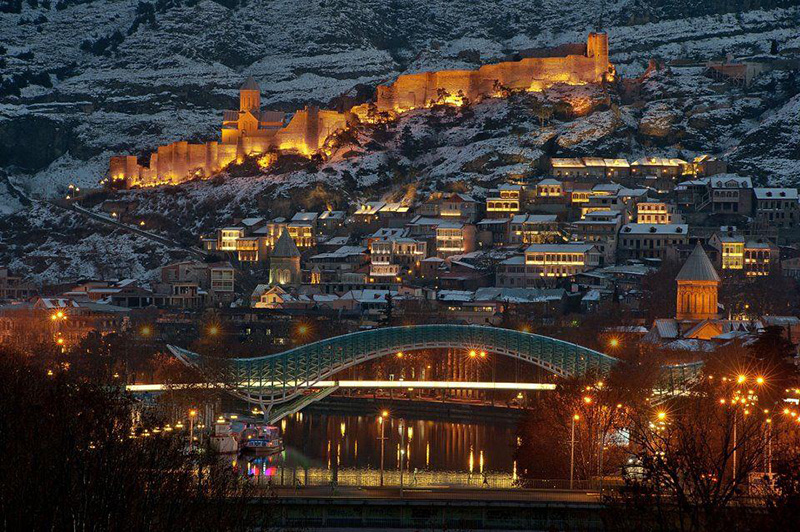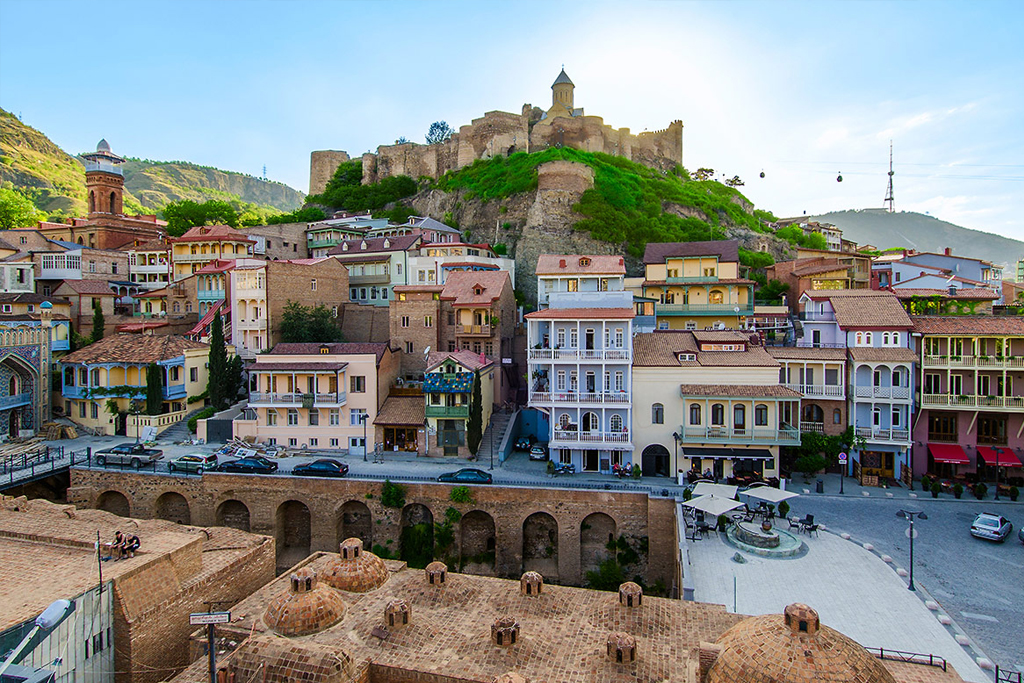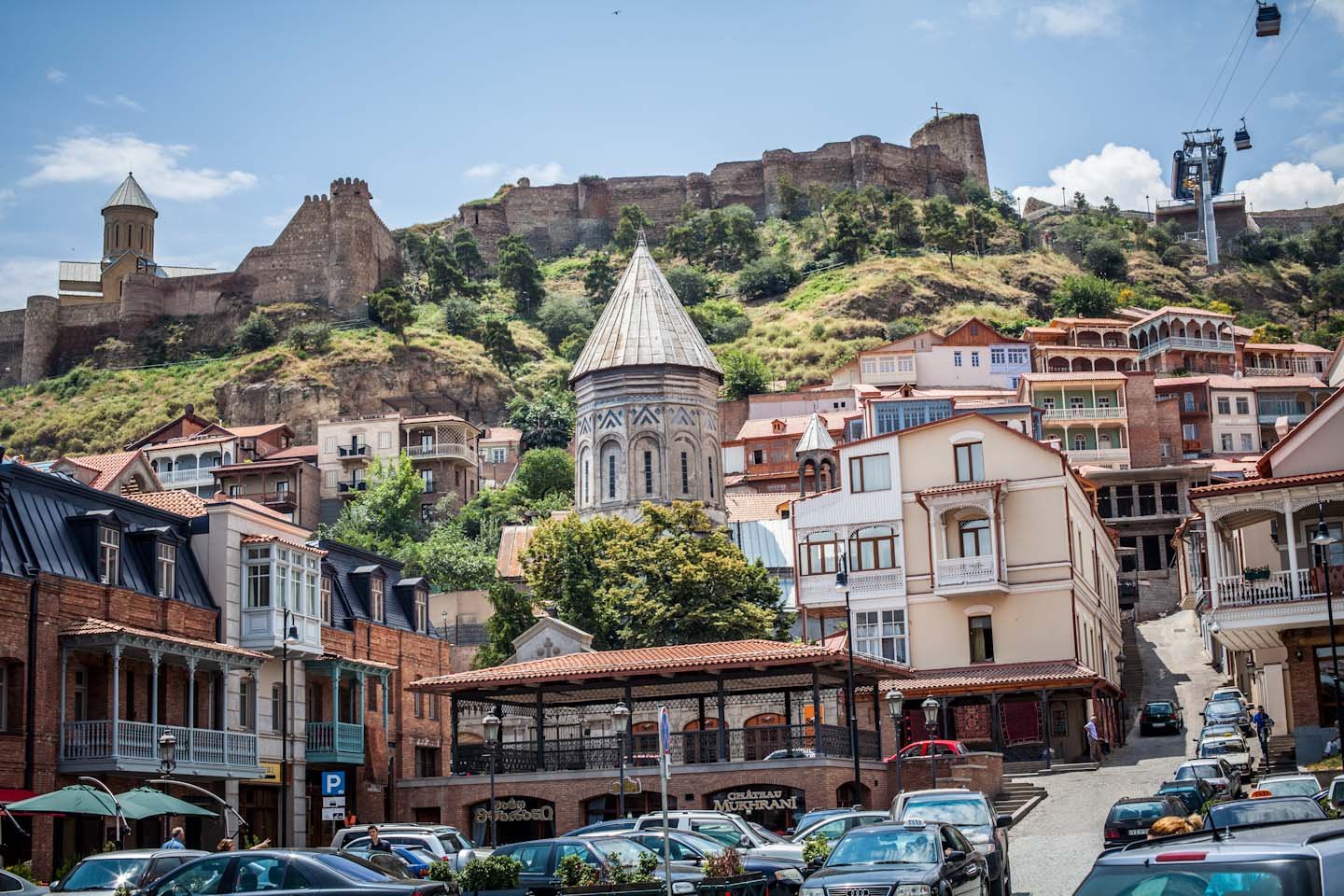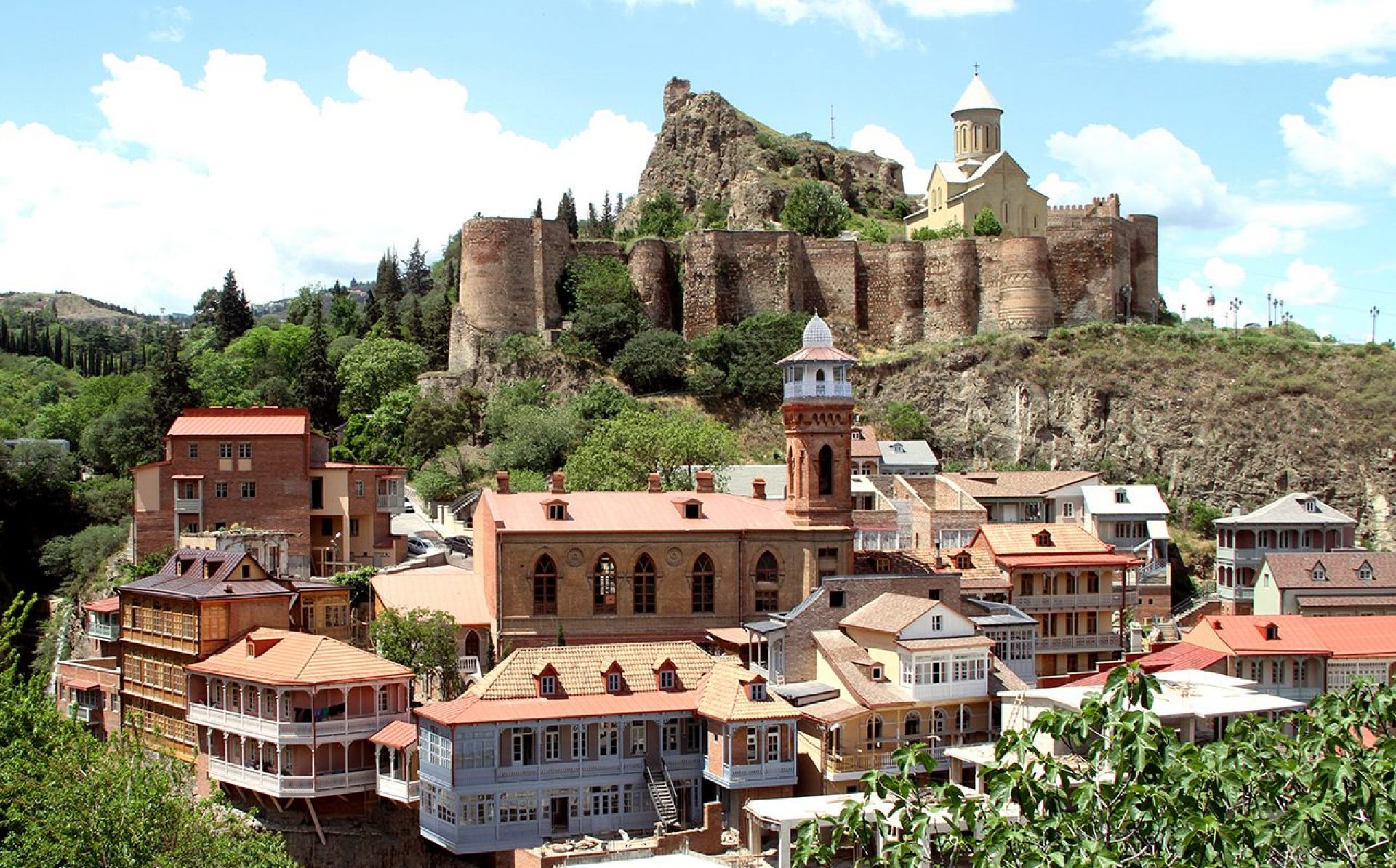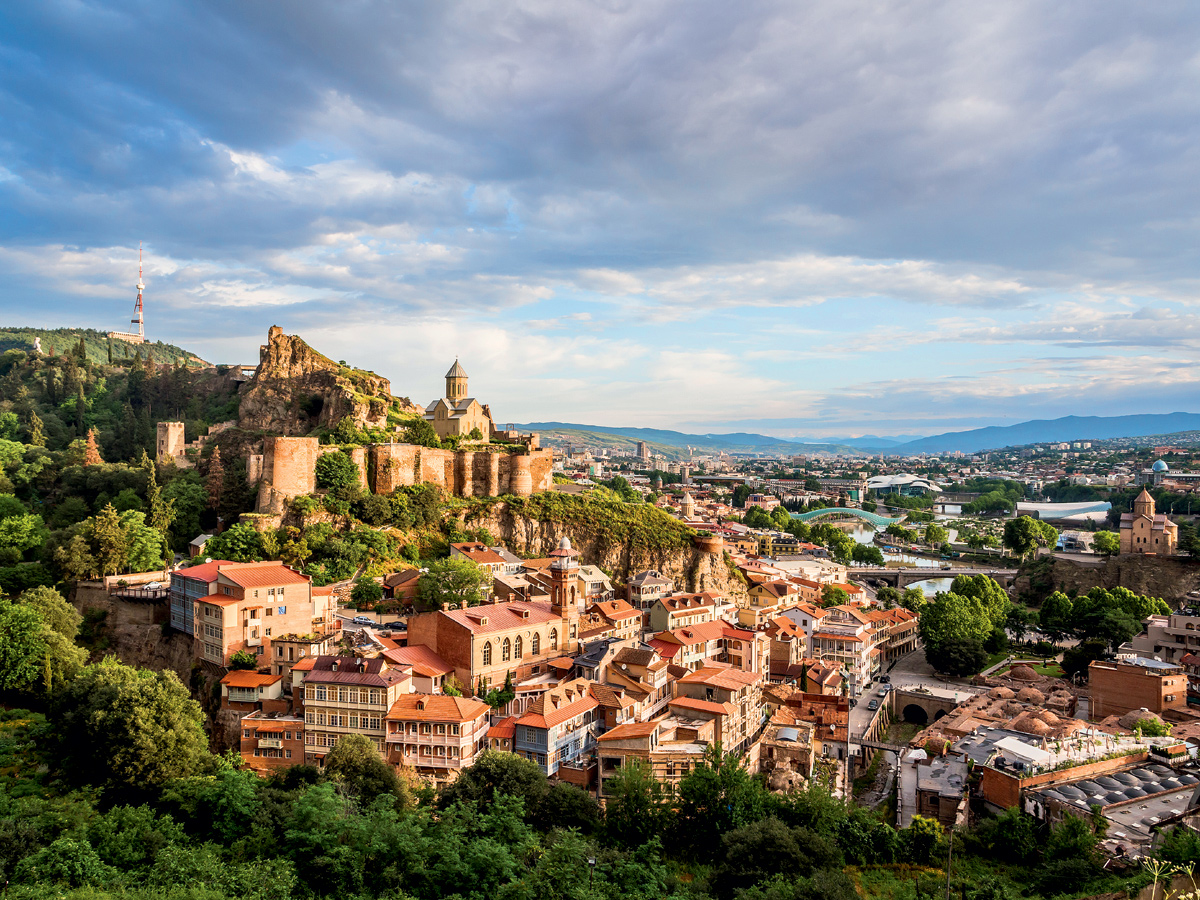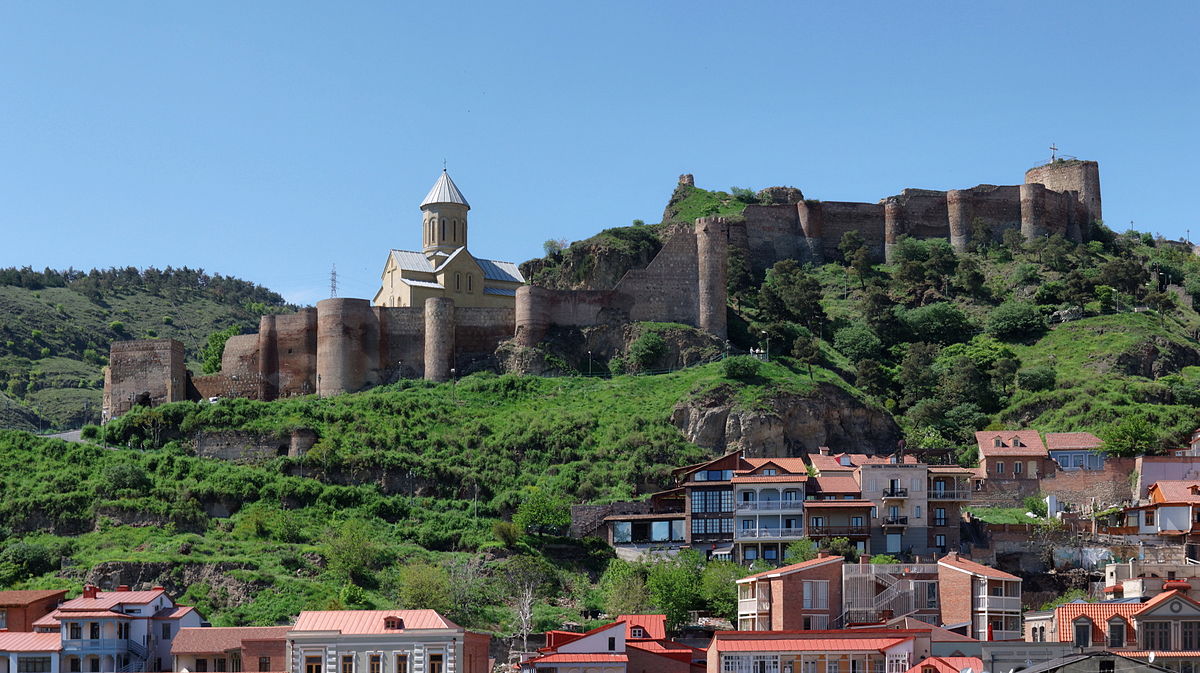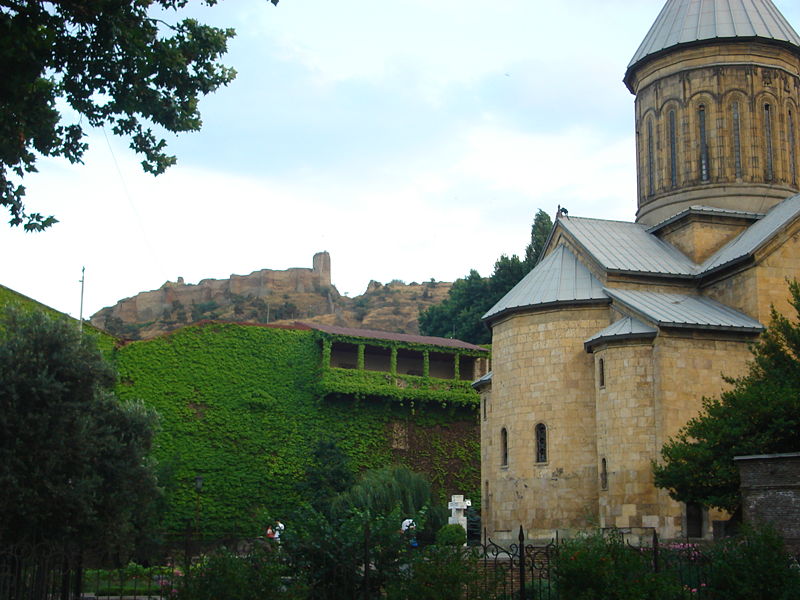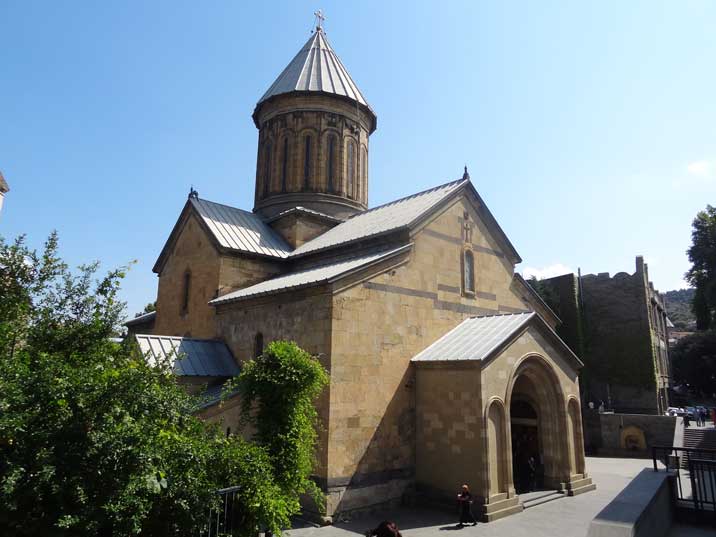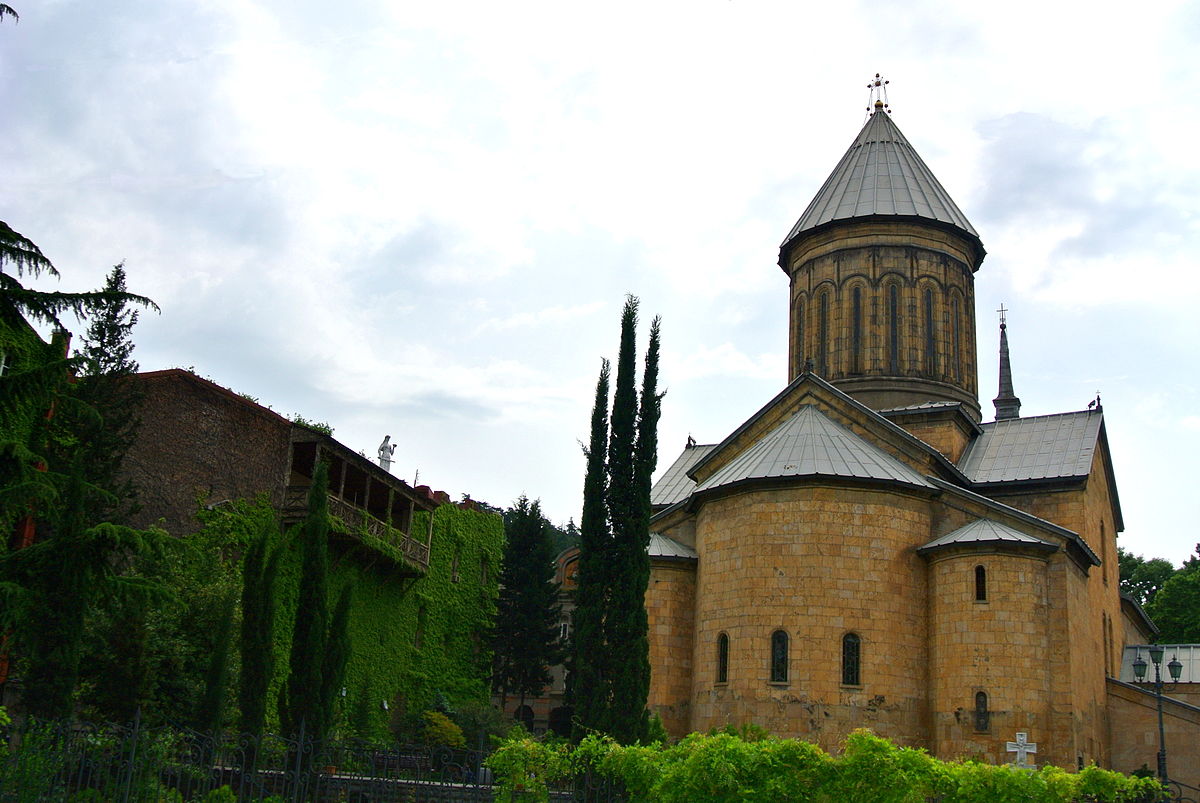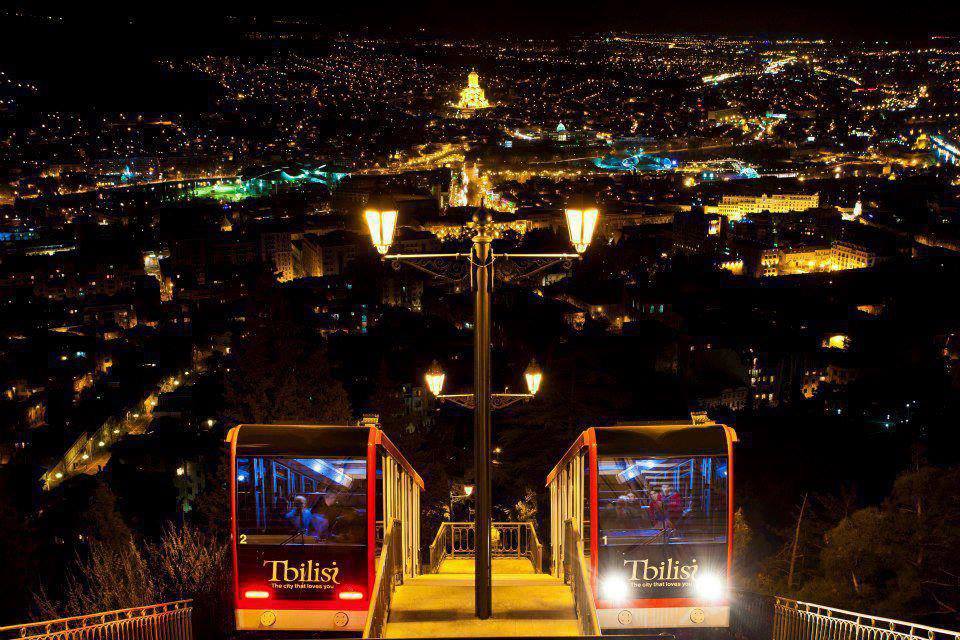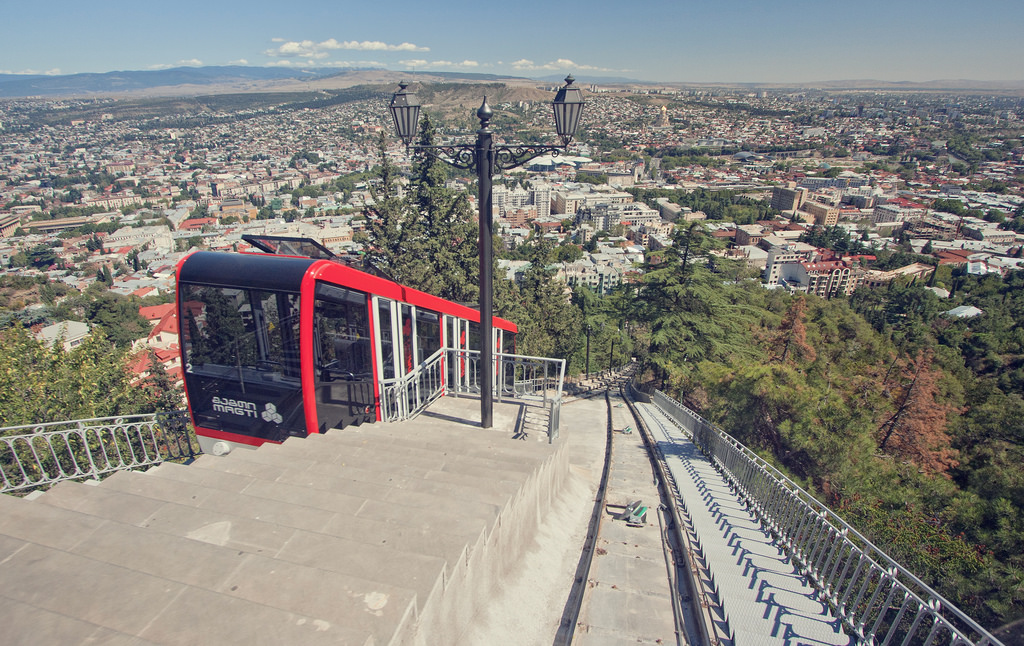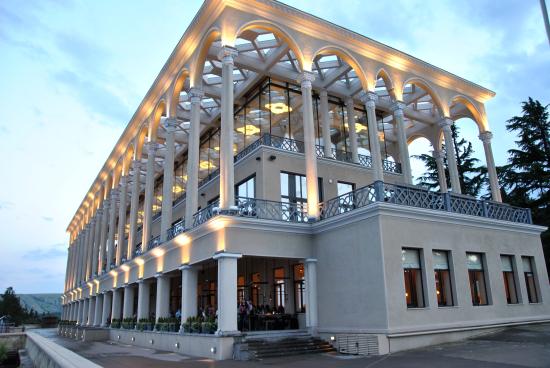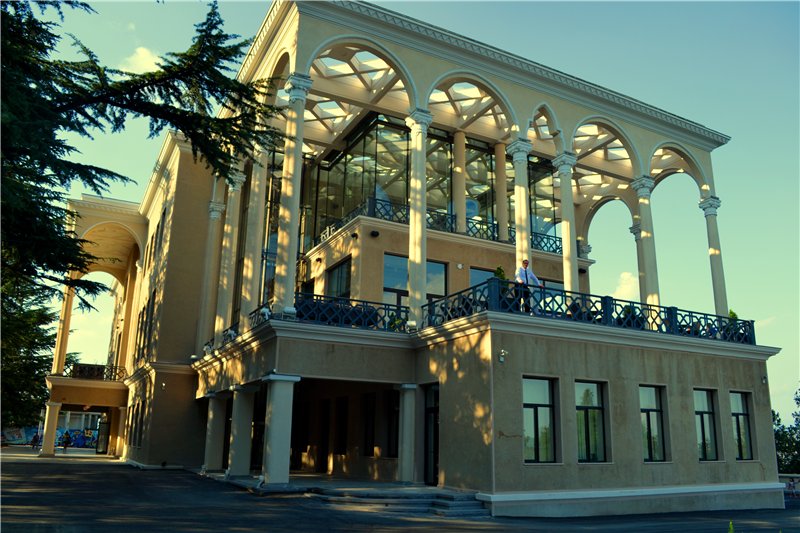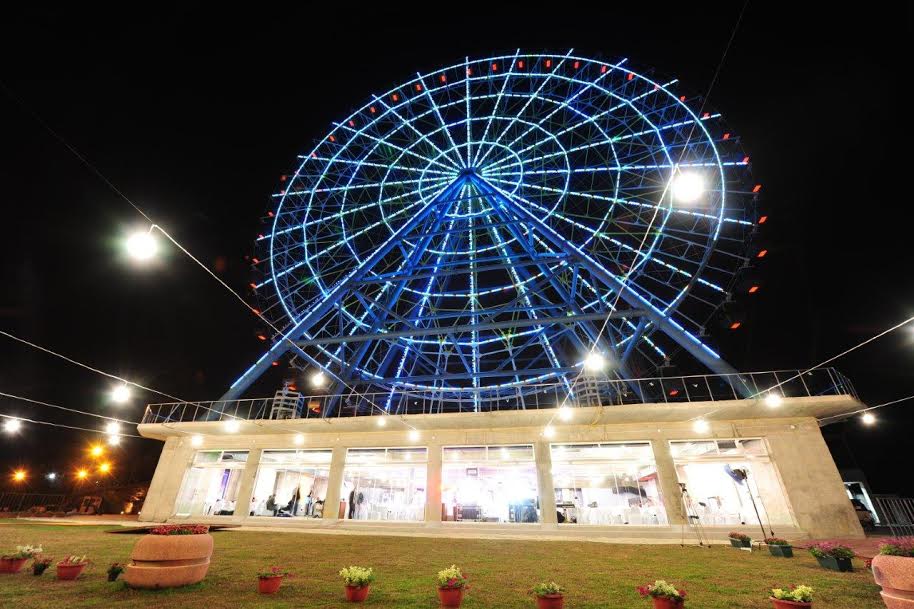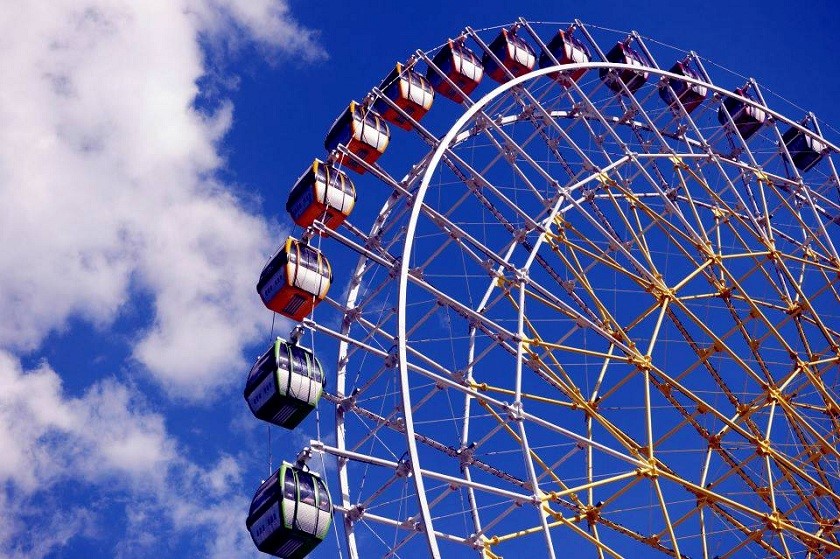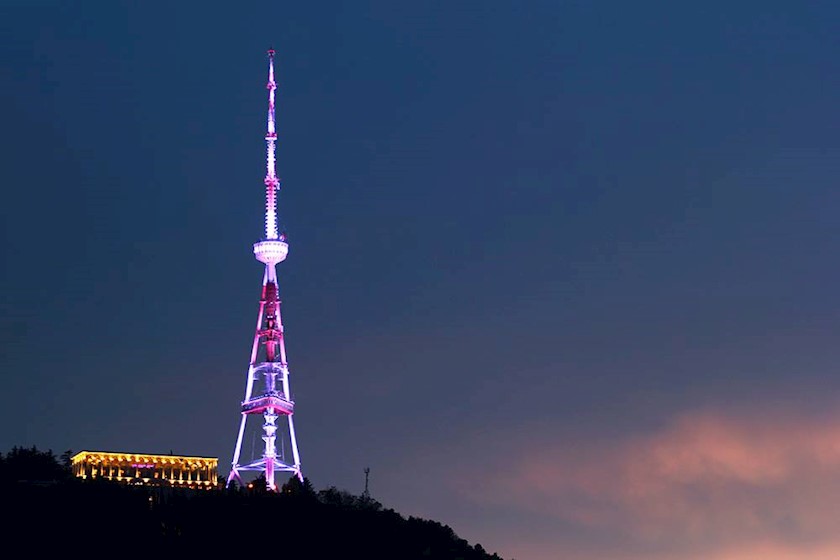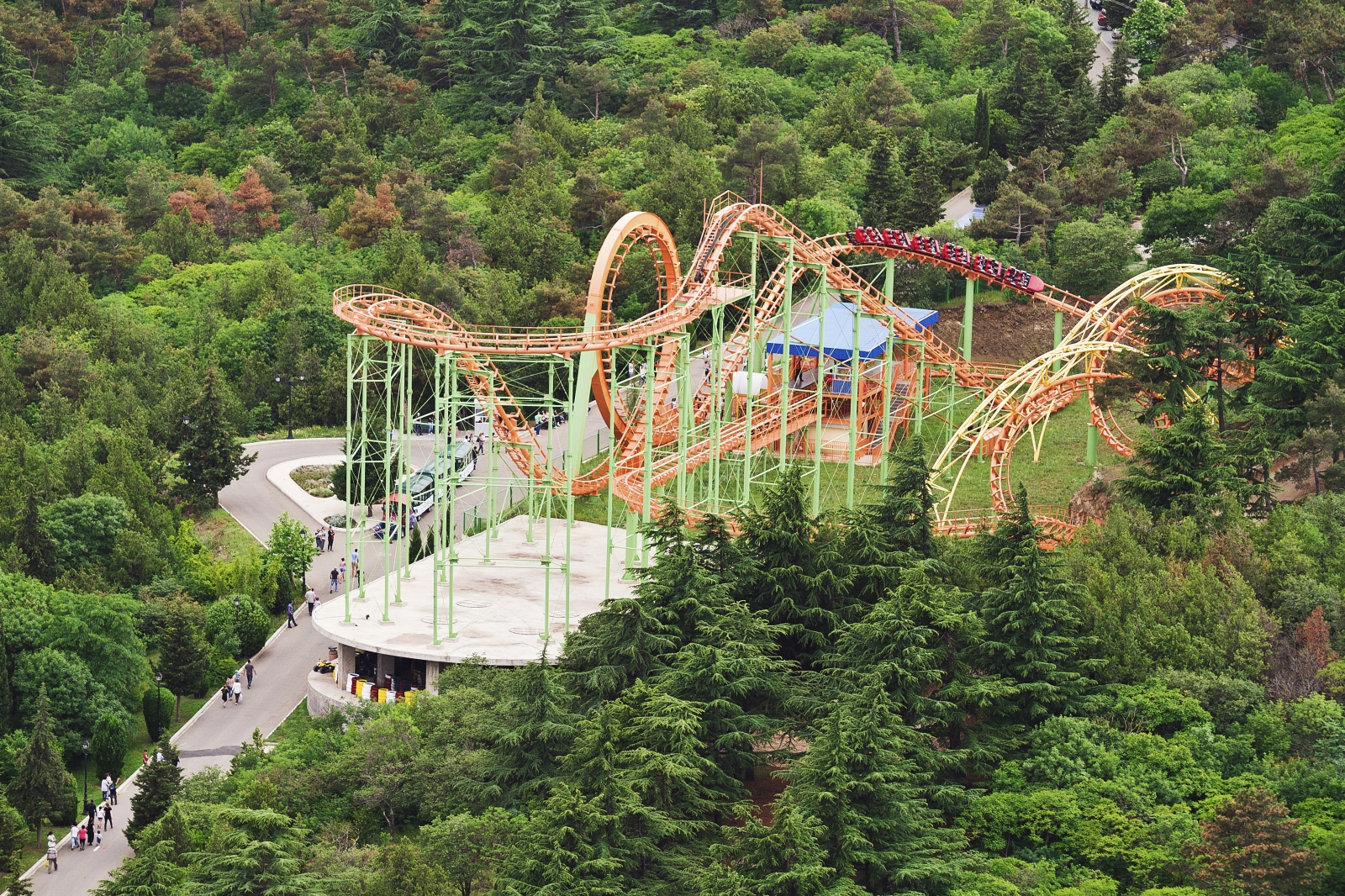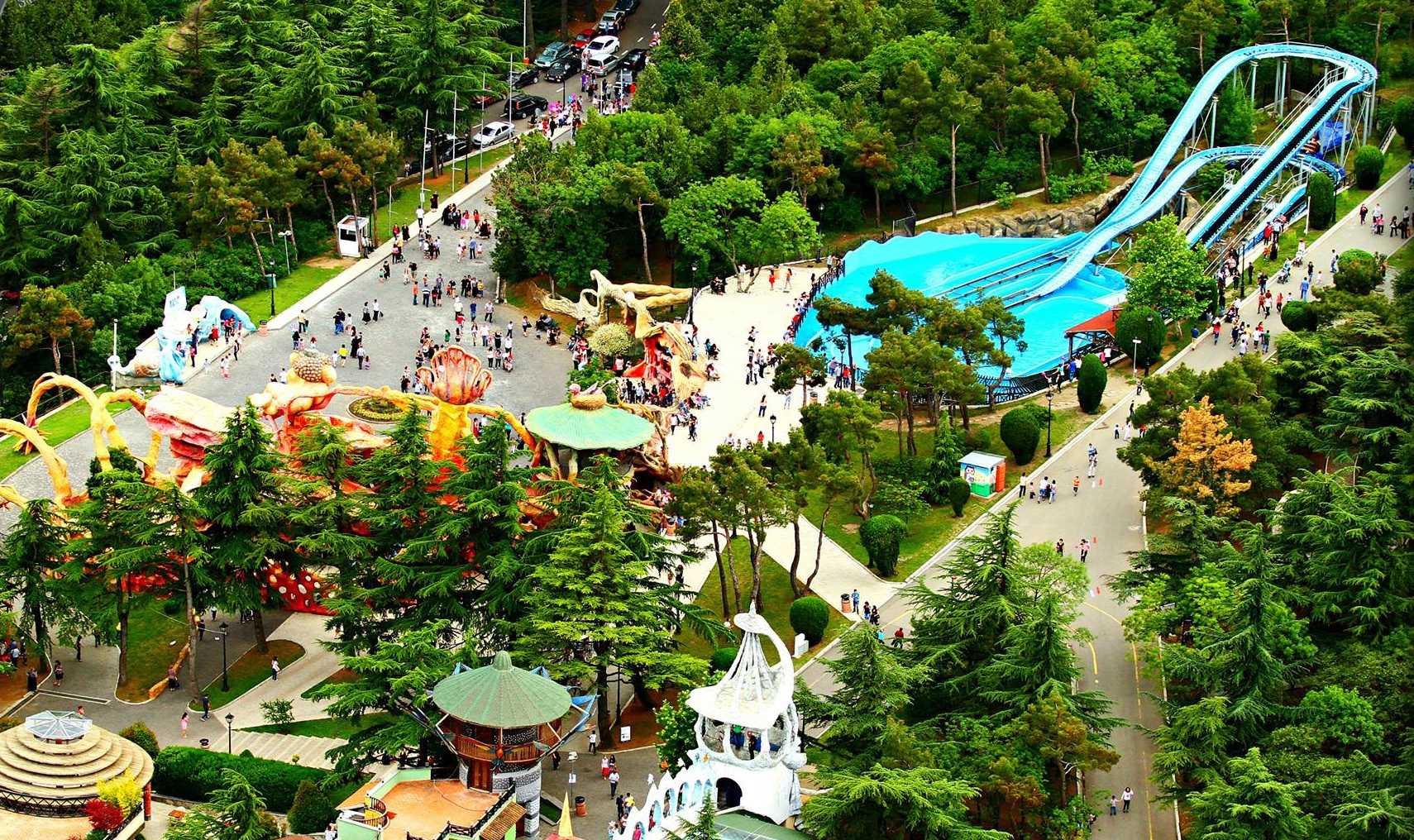HOTEL (Tbilisi) – HOLY TRINITY CATHEDRAL – METEKHI – BRIDGE OF PEACE – MEIDAN SQUARE – SULFUR BATHS – BOTANICAL GARDEN – NARIKALA FORTRESS – SIONI CATHEDDRAL – FUNICULAR – MTATSMINDA PARK – HOTEL
HOLY TRINITY CATHEDRAL (SAMEBA)show galleryhide gallery
SAMEBA – The Holy Trinity Cathedral of Tbilisi commonly known as Sameba is the main cathedral of the Georgian Orthodox Church located in Tbilisi, the capital of Georgia. Constructed between 1995 and 2004, it is the third-tallest Eastern Orthodox cathedral in the world and one of the largest religious buildings in the world by total area. Sameba is a synthesis of traditional styles dominating the Georgian church architecture at various stages in history and has some Byzantine undertones.
METEKHIshow galleryhide gallery
Metekhi is a historic neighborhood of Tbilisi, Georgia, located on the elevated cliff that overlooks the Mtkvari river. The neighborhood is home to the eponymous Metekhi Church of Assumption.
The district was one of the earliest inhabited areas on the city’s territory. According to traditional accounts, King Vakhtang I Gorgasali erected here a church and a fort which served also as a king’s residence; hence comes the name Metekhi which dates back to the 12th century and literally means “the area around the palace”. Tradition holds that it was also a site where the 5th-century martyr lady Saint Shushanik was buried. However, none of these structures have survived the Mongol invasion of 1235.
The extant Metekhi Church of Assumption, resting upon the top of the hill, was built by the Georgian king St Demetrius II circa 1278–1284 and is somewhat an unusual example of domed Georgian Orthodox church. It was later damaged and restored several times. King Rostom (r. 1633-1658) fortified the area around the church with a strong citadel garrisoned by some 3,000 soldiers. Under the Russian rule (established in 1801), the church lost its religious purpose and was used as a barracks (R. G. Suny, p. 93). The citadel was demolished in 1819 and replaced by a new building which functioned as the infamous jail down to the Soviet era, and was closed only in 1938.
Amid the Great Purges, the Georgian Communist chief Lavrenti Pavlovich Beria intended to destroy the church as well, but met a stubborn opposition by a group of Georgian intellectuals led by the painter and art collector Dimitri Shevardnadze. Beria replied to their urges, that it would surely be enough to preserve a scale model of the church so that people could see it in a museum, and then is said to have told Shevardnadze privately that if he gave up his efforts to save the church he would be appointed director of the future museum. The artist refused and was imprisoned and executed (Ami Knight, p. 84). The building was preserved, however. In the later part of Soviet period the church was used as a theatre. The equestrian statue of King Vakhtang I Gorgaslan by the sculptor Elguja Amashukeli was erected in front of the church in 1961.
In the late 1980s, Catholicos-Patriarch of All Georgia Ilia II launched a popularly supported campaign aiming at the restoration of the church to the Georgian Patriarchate. A well-known dissident and the future president of Georgia Zviad Gamsakhurdia went on a hunger strike in support of this demand. Despite initial resistance from the local Communist leadership, the church became functioning again in 1988.
BRIDGE OF PEACEshow galleryhide gallery
The bridge was made from glass and still, was officially opened in May 2010. In the design of the bridge built in an interesting system of illumination:
in the evening and night time every hour thousand bulbs translate Morse code message, visible to both of parapets of the bridge.
MEIDAN SQUAREshow galleryhide gallery
In tsarist times Meidan was the site of Tbilisi’s bustling main bazaar. Today it’s busy with traffic but lined on two sides by restaurants and cafes, and it opens to the Metekhi Bridge over the Mtkvari – all overlooked by Narikala Fortress.
SULFUR BATHSshow galleryhide gallery
Sulfur baths are one of the major attractions of Tbilisi. The reason for this is the story of the city, according to which the king Gorgasali saw warm sulfur springs, gave the order on the construction of the new capital of his state at this place. Even the name of the city is translated as “warm”.
All baths are situated in the old town and placed on a “bathhouse” street.
There were also luxurious baths for the princess, baths for gentlemen and officers, and baths for local inhabitants.
The warm sulfurous bath – is a significant historic place, around which grew the present capital of Georgia – Tbilisi.
BOTANICAL GARDENshow galleryhide gallery
The National Botanical Garden of Georgia, formerly the Tbilisi Botanical Garden, is a research, cultural-educational and nature conservation institution in Georgia. Located in the foothills of Narikala Castle in Tbilisi, it occupies an area of 161 hectares and possesses a collection of over 4,500 plant groups.
The Garden’s collection contains flora from the Caucasus region, China , the Himalayas, Japan, North America , Turkey, Siberia and the Mediterranean.
The Garden’s history spans more than three centuries. It was first described in 1671 by the French traveler Jean Chardin and is thought to have been founded as a royal garden in 1625. The gardens were pillaged during the Persian invasion of 1795 but restored in the early 19th century and officially established as the Tiflis Botanical Garden in 1845.
NARIKALA FORTRESSshow galleryhide gallery
Narikala is an ancient fortress overlooking Tbilisi, the capital of Georgia, and the Kura River. The fortress consists of two walled sections on a steep hill between the sulphur baths and the botanical gardens of Tbilisi. On the lower court there is the recently restored St Nicholas church. Newly built in 1996–1997, it replaces the original 13th-century church that was destroyed in a fire. The new church is of “prescribed cross” type, having doors on three sides. The internal part of the church is decorated with the frescos showing scenes both from the Bible and history of Georgia.
The fortress was established in the 4th century as Shuris-tsikhe (i.e., “Invidious Fort”) and it was a Persian citadel. It was considerably expanded by the Umayyads in the 7th century and later, by king David the Builder (1089–1125). The Mongols renamed it “Narin Qala” (i.e., “Little Fortress”). Most of extant fortifications date from the 16th and 17th centuries. In 1827, parts of the fortress were damaged by an earthquake and demolished.
SIONI CATHEDDRALshow galleryhide gallery
The Sioni Cathedral of the Dormition is a Georgian Orthodox cathedral in Tbilisi, the capital of Georgia. Following a medieval Georgian tradition of naming churches after particular places in the Holy Land, the Sioni Cathedral bears the name of Mount Zion at Jerusalem. It is commonly known as the “Tbilisi Sioni” to distinguish it from several other churches across Georgia bearing the name Sioni.
The Tbilisi Sioni Cathedral is situated in historic Sionis Kucha (Sioni Street) in downtown Tbilisi, with its eastern façade fronting the right embankment of the Kura River. It was initially built in the 6th and 7th centuries. Since then, it has been destroyed by foreign invaders and reconstructed several times. The current church is based on a 13th-century version with some changes from the 17th to 19th centuries. The Sioni Cathedral was the main Georgian Orthodox Cathedral and the seat of Catholicos-Patriarch of All Georgia until the Holy Trinity Cathedral was consecrated in 2004.
FUNICULARshow galleryhide gallery
In 1900 the city government commissioned the Belgian engineer, Alphonse Roby, to construct a funicular. The 500 metres long line was opened in March 1905. It consisted of three stations, the lower on today’s Chonquadze street in the city, the Pantheon stop near the Mtatsminda Pantheon, and Mtatsminda, at the top of mountain.
The popularity of the Funicular was further increased when an entertainment and leisure park was constructed on the Mtatsminda plateau in the 1930s. In the days of the Soviet Union, Mtatsminda Park was the third most visited public park in the USSR, Gorky Park in Moscow being number one.
It was closed in 2000 following an accident, but reopened in 2012 after a comprehensive reconstruction project that renovated the stations and replaced the drive mechanism, rails, cars and safety equipment.
The Funicular is a great way to get to Mtatsminda Park. The restored station is in Chonkadze Street
MTATSMINDA PARKshow galleryhide gallery
The popularity of the Funicular of Tbilisi was further increased when an entertainment and leisure park was constructed on the Mtatsminda plateau in the 1930s. In the days of the Soviet Union, Mtatsminda Park was the third most visited public park in the USSR, Gorky Park in Moscow being number one.

